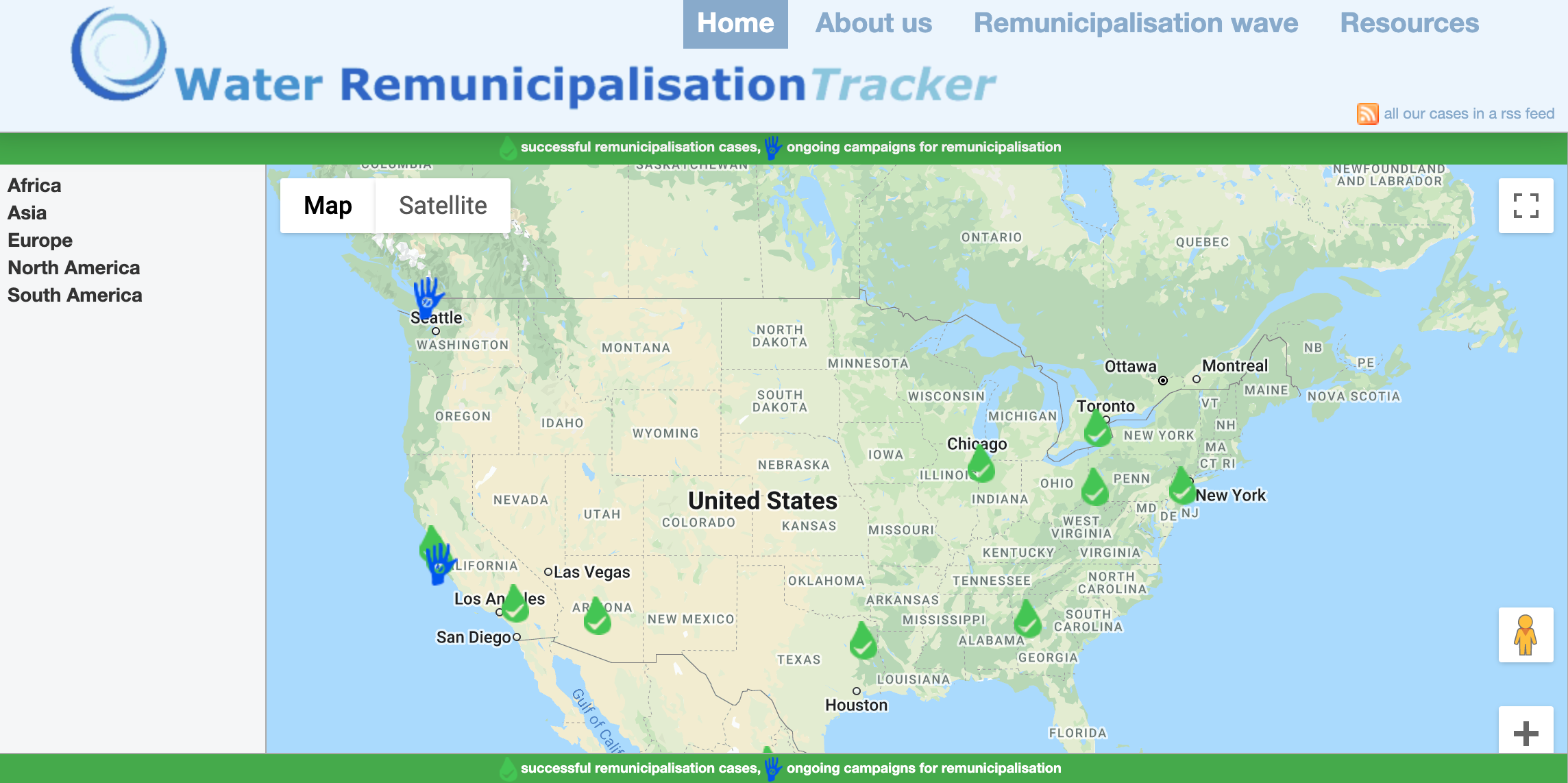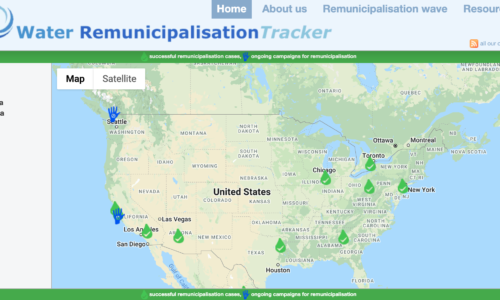Established in 2010, the Bureau of Reclamation’s WaterSMART (Sustain and Manage America’s Resources for Tomorrow) Program provides federal leadership and financial assistance for the efficient use of water in the Western United States. Each year, Reclamation allocates millions of dollars in grant funding through the WaterSMART Program to support Western States, tribes, and local water providers as they plan and implement actions to advance their water efficiency and supply reliability priorities.
What is WaterSMART?
 The WaterSMART program was created to address the Western United States’ serious water challenges – widespread drought, increased population, aging infrastructure, and environmental water requirements that all place strain on water resources. The WaterSMART Program funds local water management programs that seek to conserve and use water more efficiently, mitigate conflict risk in areas at a high risk of future water conflict, or accomplish other benefits that contribute to water supply reliability, among other objectives.
The WaterSMART program was created to address the Western United States’ serious water challenges – widespread drought, increased population, aging infrastructure, and environmental water requirements that all place strain on water resources. The WaterSMART Program funds local water management programs that seek to conserve and use water more efficiently, mitigate conflict risk in areas at a high risk of future water conflict, or accomplish other benefits that contribute to water supply reliability, among other objectives.
Since 2010, the WaterSMART Program contributed $940 million in Federal funds with over $3 billion in non-Federal cost share for 887 water resources planning and on-the-ground projects in the Western US.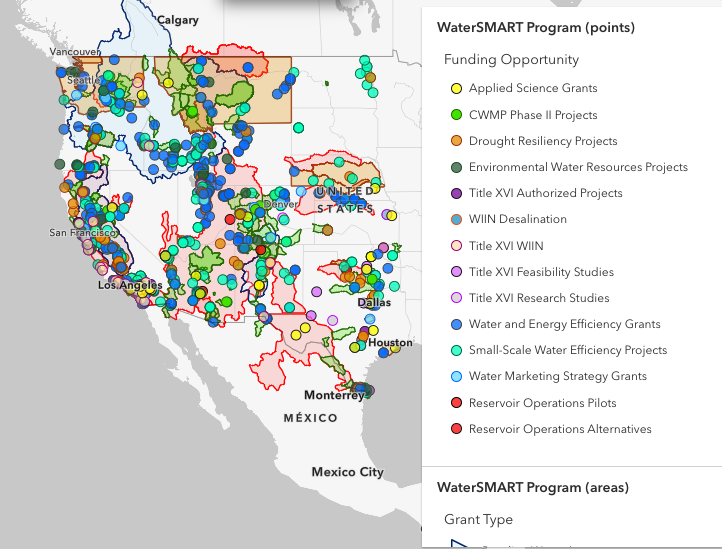
There are 6 unique water supply reliability programs that operate under the WaterSMART program. You can find more details about WaterSMART funded projects on Reclamation’s WaterSMART Data Visualization Tool.
Through our WaterSMART Grant Application Support & Help Desk program, WaterNow can support Colorado water providers with no-cost, hands-on assistance to navigate and apply for WaterSMART grants. WaterNow provides support on eight of the WaterSMART opportunities:
Explore the dropdowns below for more details on each funding opportunity and click here to learn more about WaterNow’s WaterSMART Grant Application Support & Help Desk program.
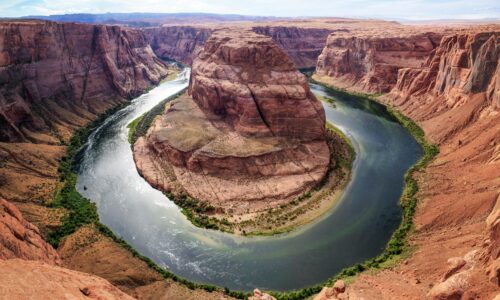
Guidebook available to help communities understand and access funding made available through the Bipartisan Infrastructure Law.
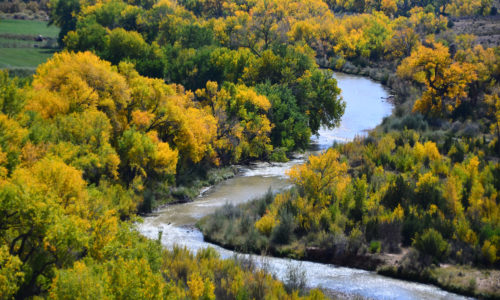
Bureau of Reclamation's 2010-2016 progress report on the WaterSMART program finding an expected water savings of 1.14 million acre-feet per year.

Bureau of Reclamation's 2016 WaterSMART program progress report fact sheet.
Eligibility & Application Process
Entities eligible for funding opportunities through the WaterSMART Program are:
 States
States
 Tribes
Tribes
 Irrigation districts
Irrigation districts
 Water districts
Water districts
 Organizations (including state, regional, or local authorities) with water or power delivery authority in the Western United States or United States territories
Organizations (including state, regional, or local authorities) with water or power delivery authority in the Western United States or United States territories
 Non-profit conservation organizations acting in partnership with any of the entities above
Non-profit conservation organizations acting in partnership with any of the entities above
In addition, to be eligible, grant applicants must be located in enumerated states and territories, which include those shown on the below map, as well as Alaska, Hawaii, American Samoa, Guam, the Northern Mariana Islands, and the Virgin Islands.
In order to apply for funding, water providers must be able to cover a percentage of total project costs with non-Federal funding (the percentage ranges from 0 – 50%, depending on the grant). Non-Federal funding can include (but is not limited to): cash, in-kind contributions, state grants or loans, and/or philanthropic grants. For most WaterSMART program grants, cost-shared project must be completed within two to three years.
Notice of Funding Opportunities (NOFOs) are available at grants.gov. Specific NOFOs should be reviewed carefully as the application requirements change regularly. The application window for WaterSMART Program grants is typically open for two to three months. Application processes will vary for each grant opportunity however all applications will require:
application requirements change regularly. The application window for WaterSMART Program grants is typically open for two to three months. Application processes will vary for each grant opportunity however all applications will require:
 A technical proposal that includes an executive summary, project description and evaluation criteria
A technical proposal that includes an executive summary, project description and evaluation criteria
 A project budget
A project budget
 Overview of environmental and cultural resource compliance
Overview of environmental and cultural resource compliance
 An official resolution from the entity’s governing board
An official resolution from the entity’s governing board
 Complete federal forms
Complete federal forms
 Registration on the System for Award Management
Registration on the System for Award Management
 And registration on grants.gov (in order to submit an application electronically)
And registration on grants.gov (in order to submit an application electronically)
The resources linked below provide further information about WaterSMART eligibilities and application requirements.

WaterNow quick-reference guide on how to determine your eligibility for federal funding.

Two Pathways to Applying for Grants on Grants.gov Workspace
Program Notifications & Resources
The WaterSMART grants featured in this section below are available annually and typically open at different times each year. To stay up to date with the latest news, grant opportunity announcements, and program notifications, complete this form to join Reclamation’s mailing list.
Additionally, if you’re interested in applying to a WaterSMART funding opportunity and would like to learn more about our WaterSMART Grant Application Support & Help Desk program, fill out this short form and we’ll be in touch!
Water & Energy Efficiency Grants
 Water and Energy Efficiency Grants (WEEG) focus on large-scale projects that result in quantifiable and sustained water savings. Criteria also place a priority on projects that support broader water reliability benefits, including multiple benefits achieved through collaboration.
Water and Energy Efficiency Grants (WEEG) focus on large-scale projects that result in quantifiable and sustained water savings. Criteria also place a priority on projects that support broader water reliability benefits, including multiple benefits achieved through collaboration.
For municipal water providers, eligible localized infrastructure projects include outdoor and indoor water use efficiency programs such as: 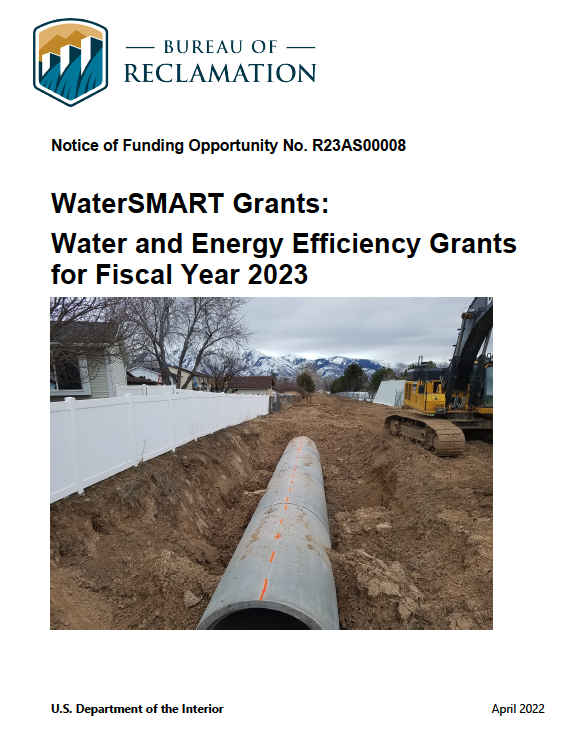
 Landscape irrigation measures such as turf replacement, smart irrigation controllers, and high efficiency sprinkler heads
Landscape irrigation measures such as turf replacement, smart irrigation controllers, and high efficiency sprinkler heads
 Projects that promote the installation of high-efficiency indoor appliances and fixtures that provide water savings through rebates or direct-install programs
Projects that promote the installation of high-efficiency indoor appliances and fixtures that provide water savings through rebates or direct-install programs
 Installing end-user water service meters, such as AMI (advanced metering infrastructure)
Installing end-user water service meters, such as AMI (advanced metering infrastructure)
Applicants can request federal funding up to $500,000 for projects to be completed within two years, $2 million for projects to be completed within three years, and $5 million for large projects to be completed within three years, all with a 50% non-Federal cost-share match.
Example WEEG Evaluation Criteria from FY24/FY25 NOFO.
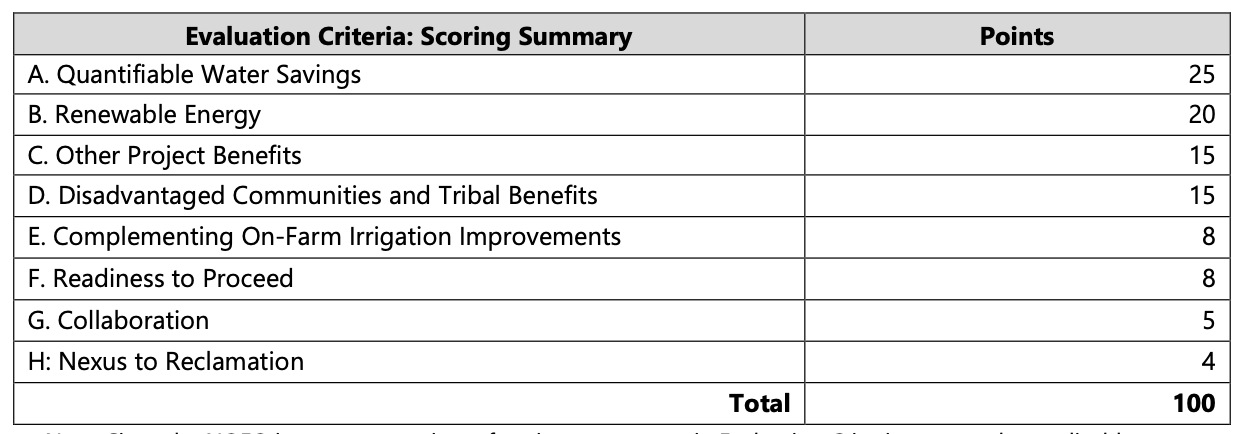
Since the NOFO is open to a variety of project types, Evaluation Criteria A-D may not apply to every project. For example, a water savings project (Criterion A) may not include implementation of a renewable energy component (Criterion B).
Reclamation typically awards 25 – 35 projects annually, contingent on Federal appropriations. For example, in FY22 Reclamation awarded $42.8 million in WEEG funding to 36 communities and in FY23 Reclamation awarded $140 million to 84 communities.
Complete this form to receive WaterSMART program notifications and to stay up to date on upcoming grant opportunities.
Small-Scale Water Efficiency Projects
The Small-Scale Water Efficiency Projects (SWEP) grant is for small-scale, on-the-ground water management projects that seek to conserve, better manage, or otherwise make more efficient use of water supplies. Projects supported by an existing water management and conservation plan, System Optimization Review, or other planning effort led by the applicant are prioritized.
Similar to the WEEG program, for municipal water providers, eligible distributed infrastructure projects include outdoor and indoor water use efficiency programs such as: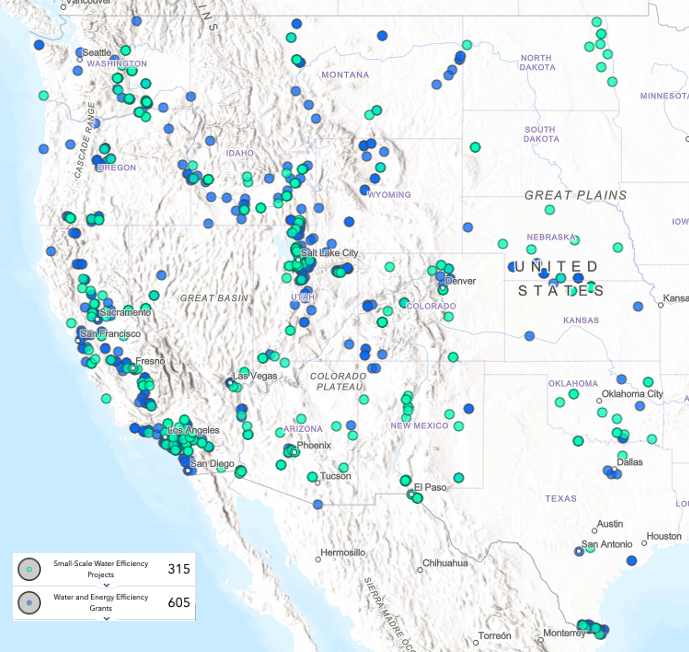
 Turf replacement, smart controllers, and high efficiency nozzles
Turf replacement, smart controllers, and high efficiency nozzles
 High-efficiency indoor appliances and fixtures
High-efficiency indoor appliances and fixtures
 Advanced Metering Infrastructure
Advanced Metering Infrastructure
The SWEP application is designed to be as streamlined as possible in order for small to mid-sized utilities to be able to apply and compared to WEEG, there’s less emphasis placed on quantified water savings.
Applicants may request up to $100,000 in Federal funding, with a non-Federal cost-share of 50% or more of total project costs, for projects with total costs generally no more than $225,000.
Example SWEP FY24 & FY25 Evaluation Criteria are included below.

Reclamation typically awards 50 – 70 projects annually, contingent on Federal appropriations. For example, in FY 21 Reclamation awarded $5.5 million for 82 water projects and in FY22 Reclamation awarded $7.04 million for 82 projects.
Complete this form to receive WaterSMART program notifications and to stay up to date on upcoming grant opportunities.

SWEP is accepting applications for FY25 funding! The fourth application deadline is July 8, 2025.
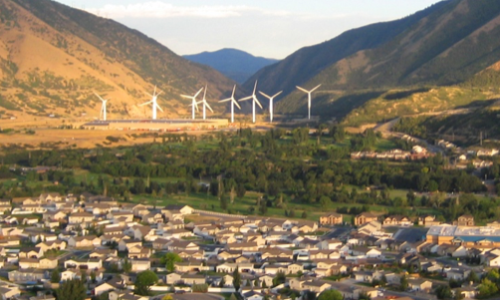
Innovative water conservation program to install free smart irrigation controllers for residential customers already reducing outdoor irrigation by 17%.
Environmental Water Resource Projects
 The Environmental Water Resource Projects (EWRP) fund projects focused on benefitting ecological values, while increasing the reliability of water resources. Eligible project types include:
The Environmental Water Resource Projects (EWRP) fund projects focused on benefitting ecological values, while increasing the reliability of water resources. Eligible project types include:
 Water conservation and efficiency projects with quantifiable and sustained water savings that benefit ecological values
Water conservation and efficiency projects with quantifiable and sustained water savings that benefit ecological values
 Water management or infrastructure improvements to mitigate drought-related impacts to ecological values
Water management or infrastructure improvements to mitigate drought-related impacts to ecological values
 Watershed management or restoration projects benefitting ecological values that have a nexus to water resources or water resources management
Watershed management or restoration projects benefitting ecological values that have a nexus to water resources or water resources management
The EWRP grant offers municipal water providers or their NGO partners/collaborators the opportunity to apply for funding that supports localized infrastructure projects that include:
 Localized water infrastructure projects, including water efficient appliances, outdoor efficiency measure such as turf replacement or smart irrigation controllers, and green stormwater infrastructure, would likely meet one or more of these eligible project categories. Click here to learn more about the types of localized infrastructure and their water management benefits.
Localized water infrastructure projects, including water efficient appliances, outdoor efficiency measure such as turf replacement or smart irrigation controllers, and green stormwater infrastructure, would likely meet one or more of these eligible project categories. Click here to learn more about the types of localized infrastructure and their water management benefits.
 Watershed management or restoration projects that restore natural wetlands, construction or improving wetlands for treatment of irrigation water or stormwater flows, or other natural features to reduce water supply and demand imbalances or the risk of drought or flood.
Watershed management or restoration projects that restore natural wetlands, construction or improving wetlands for treatment of irrigation water or stormwater flows, or other natural features to reduce water supply and demand imbalances or the risk of drought or flood.
Applicants can request federal funding of up to $3 million for projects that can be completed within three years. Watershed Groups may request up to $5 million for projects to be completed within 5 years. Applicants that have water or power delivery authority must be capable of cost sharing 25% or more of the total project cost. NGO/Watershed Group applicants must be capable of cost sharing 50% or more of the total project cost.
FY24 / 25 EWRP Evaluation Criteria are included below.

Reclamation typically awards 15 – 20 projects annually, contingent on Federal appropriations. For example, in FY22, Reclamation awarded $36.1 million in EWRP funding to 27 communities. Between 20-40 projects will be selected per application submittal period in FY24 and FY25.
Complete this form to receive WaterSMART program notifications and to stay up to date on upcoming grant opportunities.

This funding opportunity is not currently accepting applications.
Drought Resiliency Projects
The Drought Resiliency Projects (DRP) grant is intended for projects that improve the ability of a water manager to  continue to deliver water and power during a drought and should decrease vulnerabilities and costs of drought. Eligible projects fall into three different categories: increasing the reliability of water supplies, improving water management, and providing benefits for fish, wildlife and the environment.
continue to deliver water and power during a drought and should decrease vulnerabilities and costs of drought. Eligible projects fall into three different categories: increasing the reliability of water supplies, improving water management, and providing benefits for fish, wildlife and the environment.
While many DRP projects focus on large-scale infrastructure improvements, funding is also available for distributed infrastructure strategies including:
 Constructing stormwater capture and reuse systems, including green stormwater infrastructure solutions such as rain gardens, cisterns, and bioswales
Constructing stormwater capture and reuse systems, including green stormwater infrastructure solutions such as rain gardens, cisterns, and bioswales
 Installing residential greywater and rain catchment systems
Installing residential greywater and rain catchment systems
 Assessing water quality with respect to the level of drought to determine appropriate measures to protect water quality for fish and wildlife, agriculture, and human consumption
Assessing water quality with respect to the level of drought to determine appropriate measures to protect water quality for fish and wildlife, agriculture, and human consumption
 Developing water budgets and tiered pricing programs that incentivize decreased consumptive use
Developing water budgets and tiered pricing programs that incentivize decreased consumptive use
Drought Resiliency Project (Tasks A-C) applicants can request federal funding of up to $750,000 for projects that could be completed in two years (Funding Group I), up to $3 million for projects that could be completed in three years (Projects in this group may be funded on an annual basis. Funding for the second and third years of the project is contingent upon future appropriations). Funding groups I and II require a 50% non-Federal cost-share match.
Domestic Water Supply Projects for Tribes or Disadvantaged Communities (Task D) applicants can request federal funding of up to $10 million for projects that can be completed in three years. Task D projects require a 5% non-Federal cost-share match.
Example DRP evaluation criteria from the FY25 NOFO are included below.

Reclamation typically awards 25-35 projects annually, contingent on Federal appropriations. For example, in FY23 Reclamation awarded $84 million in DRP funding to 36 communities.
Complete this form to receive WaterSMART program notifications and to stay up to date on future grant opportunities.
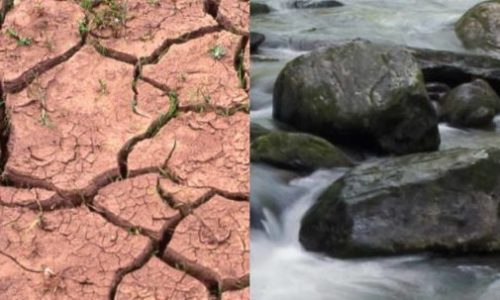
AWWA manual with step-by-step guide for preparing for and responding to drought related water shortages.
Planning and Project Design Grants
 Planning and Project Design Grants (PPDG) house three funding opportunities to plan and design water projects and Drought Contingency Plans. PPDGs are available to fund early-stage planning activities (Water Strategy Grants), final design of medium to large-scale on-the ground water supply construction (Project Design Grants), and developing and updating comprehensive drought plans (Drought Contingency Planning Grants).
Planning and Project Design Grants (PPDG) house three funding opportunities to plan and design water projects and Drought Contingency Plans. PPDGs are available to fund early-stage planning activities (Water Strategy Grants), final design of medium to large-scale on-the ground water supply construction (Project Design Grants), and developing and updating comprehensive drought plans (Drought Contingency Planning Grants).
Applicants can request federal funding of up to $400,000 for projects that could be completed in three years with a 0-50% non-Federal cost-share match, depending on project type.
PPDG evaluation criteria for FY23/24 funding opportunity are included below.

The FY23 and FY24 combined funding opportunity has $35 million available and Reclamation plans to award between 60-70 projects.
Complete this form to receive WaterSMART program notifications and to stay up to date on future grant opportunities.
Water Conservation Field Services Program
 Unlike the other WaterSMART funding programs, the Water Conservation Field Services Program (WCFSP) is managed by each of Reclamation’s regional offices and implemented at the local level through Reclamation’s area offices in order to advance water conservation and to meet local goals.
Unlike the other WaterSMART funding programs, the Water Conservation Field Services Program (WCFSP) is managed by each of Reclamation’s regional offices and implemented at the local level through Reclamation’s area offices in order to advance water conservation and to meet local goals.
Funding is typically available for projects that prioritize water planning efforts including:
 Developing water conservation plans to meet state or local water conservation goals
Developing water conservation plans to meet state or local water conservation goals
 Identifying water management improvements through System Optimization Reviews (SORs)
Identifying water management improvements through System Optimization Reviews (SORs)
 Designing water management improvements
Designing water management improvements
 Improving application of water conservation technologies through demonstration activities
Improving application of water conservation technologies through demonstration activities
Water conservation demonstration activities, in particular, is an opportunity for utilities to test out and gather data around innovative, distributed infrastructure tools and technologies such as leak detection devices, smart irrigation controllers, low-flow appliances, etc. If the demonstration program is successful, this demonstration program could then receive additional funding for large-scale implementation through WEEG.
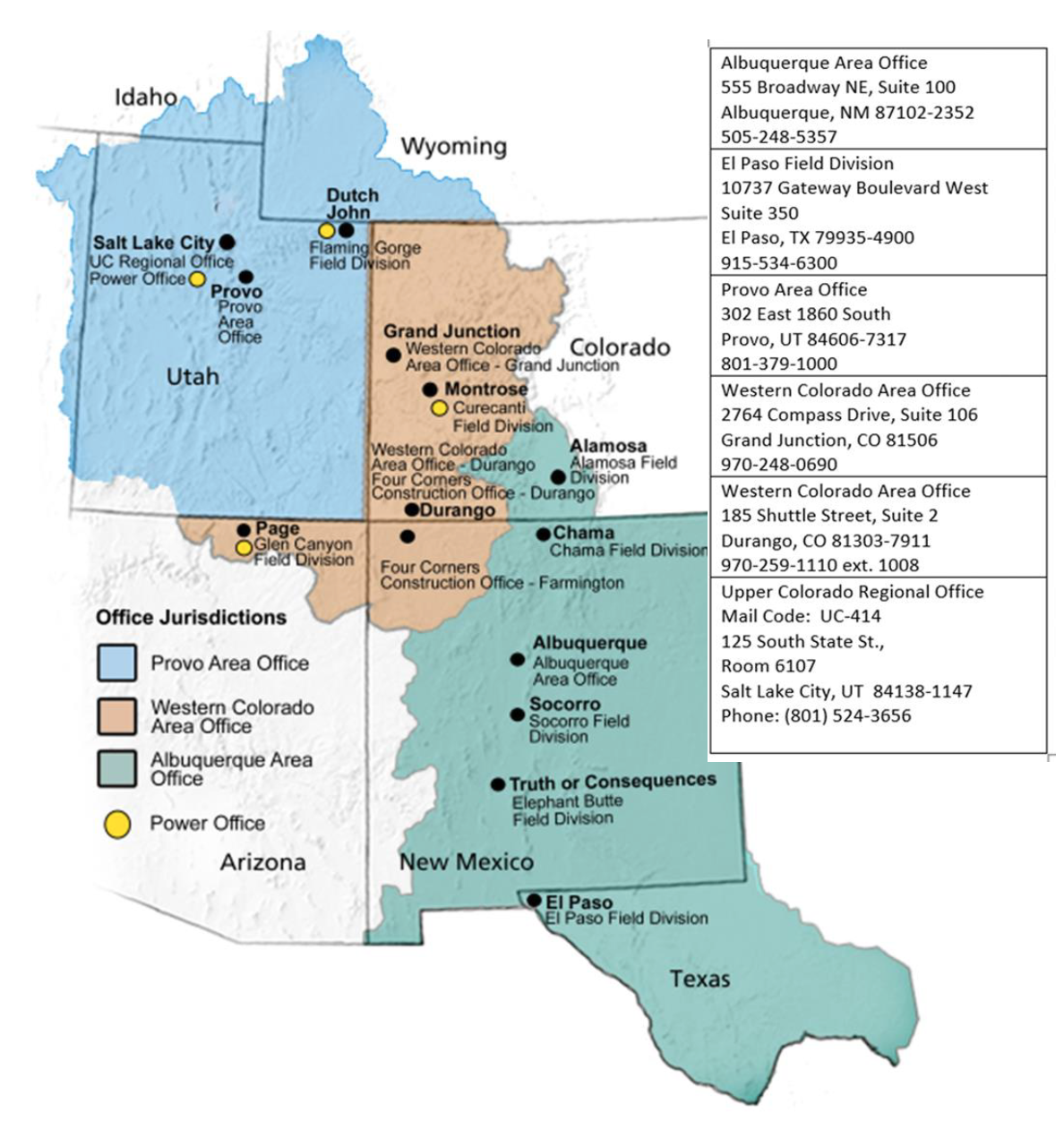
For the Upper Colorado Basin Region (UCB), applicants can request up to $100,000 with a 50% non-Federal cost share match. Be sure to confirm your eligibility through your regional office before applying.
Example WCFSP UCB Evaluation Criteria are included below.
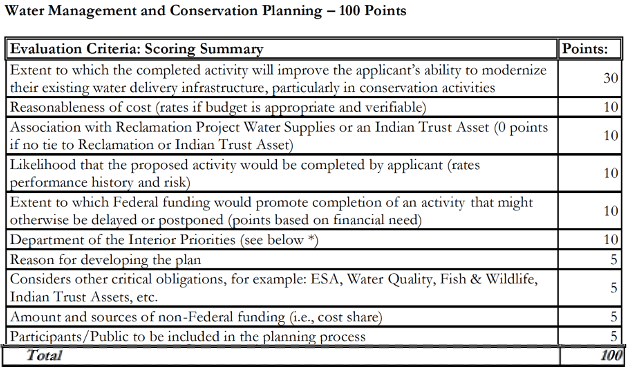
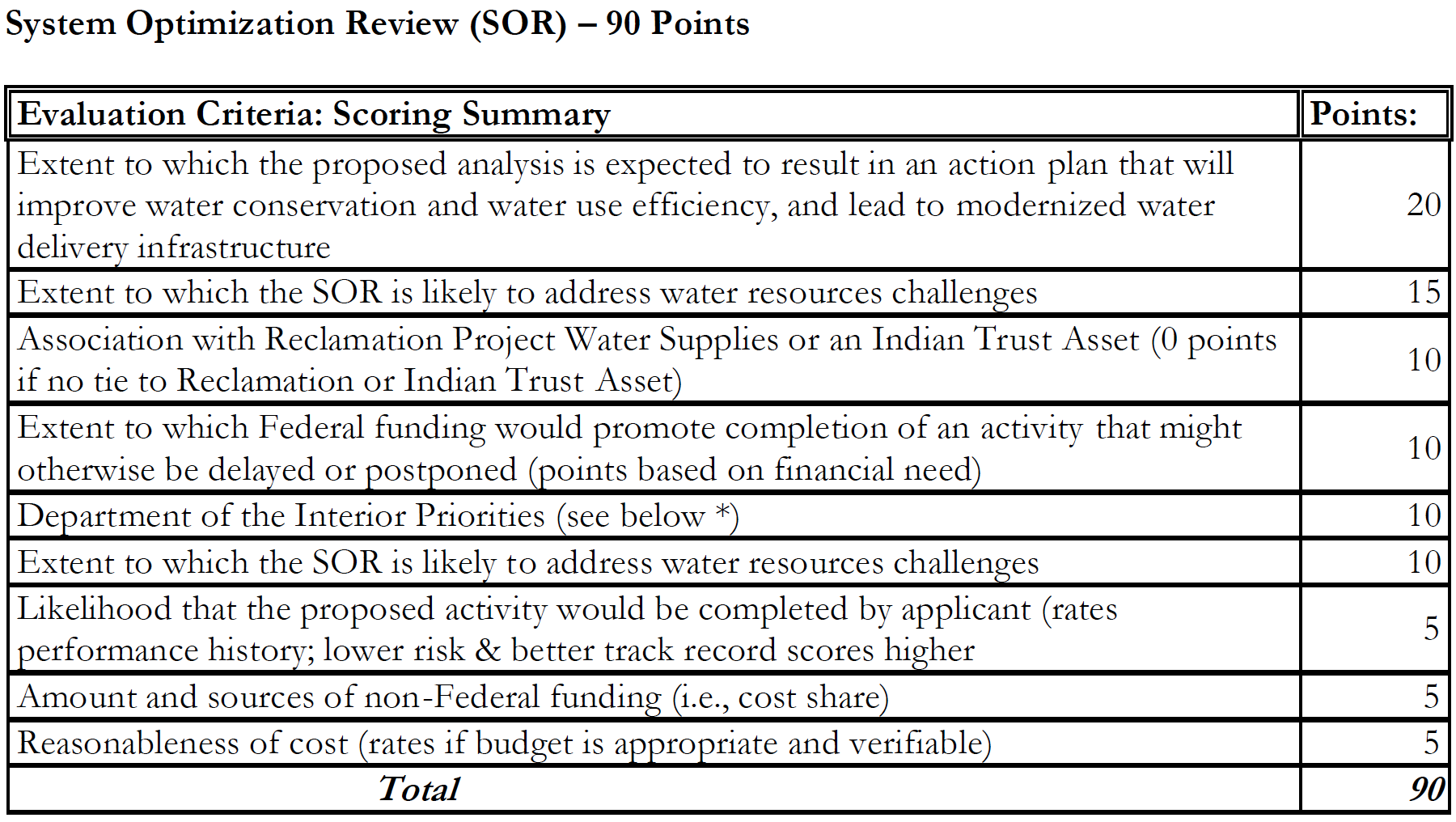
Reclamation typically awards six projects annually, contingent on Federal appropriations.
Complete this form to receive WaterSMART program notifications and to stay up to date on future grant opportunities.
Aquatic Ecosystem Restoration Program
 The Aquatic Ecosystem Restoration Program (AERP) funds the study, design, and construction of aquatic ecosystem restoration projects, for the purpose of improving the health of fisheries, wildlife, and/or aquatic habitat. This opportunity provides funding under two task areas: Study and Design Projects and Construction Projects. Eligible project activities include:
The Aquatic Ecosystem Restoration Program (AERP) funds the study, design, and construction of aquatic ecosystem restoration projects, for the purpose of improving the health of fisheries, wildlife, and/or aquatic habitat. This opportunity provides funding under two task areas: Study and Design Projects and Construction Projects. Eligible project activities include:
Study and Design:
 Project Outreach
Project Outreach
 Restoration Project Design Alternatives Analysis
Restoration Project Design Alternatives Analysis
 Project Analysis and Design
Project Analysis and Design
 Design and Engineering to reach 60% level of final project design
Design and Engineering to reach 60% level of final project design
 Preparation of cost estimates and development of construction plans
Preparation of cost estimates and development of construction plans
 Legal and Institutional Requirements Research
Legal and Institutional Requirements Research
Construction Projects:
 Completion of Final Project Design
Completion of Final Project Design
 Outreach to Affected Stakeholders
Outreach to Affected Stakeholders
 Removal or Modification of Barriers to Fish Passage
Removal or Modification of Barriers to Fish Passage
 Restoration of Connectivity
Restoration of Connectivity
 Restoration of Aquatic Habitat
Restoration of Aquatic Habitat
 Improvement of Water Availability, Quality, and Temperature
Improvement of Water Availability, Quality, and Temperature
 Other Related Activities
Other Related Activities
Applicants for Study and Design projects may request up to $2 million, with a minimum award of $500,000. Construction Projects can receive up to $10 million in federal funding under this program, with a minimum award of $3 million. Applicants for both types of projects must obtain 35% of the total project cost as non-federal cost-share funding.
Example Evaluation Criteria are as follows:

Approximately $95 million is available for this program in FY25 and FY26 and Reclamation expects to award between 10 – 20 projects, depending on the amount requested by each applicant. In FY24, Reclamation awarded approximately $92 million to 19 projects.
Complete this form to receive WaterSMART program notifications and to stay up to date on upcoming grant opportunities.
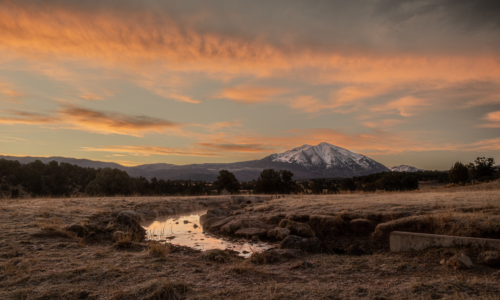
AERP is not currently accepting applications.
Cooperative Watershed Management Program
The Cooperative Watershed Management Program (CWMP) provides funding to grassroots, local watershed groups to develop collaborative solutions with diverse stakeholders to address water management needs. Funding is provided on a competitive basis to support the development of watershed groups, watershed management project design, and watershed restoration planning.

USBR defines a watershed group as a “self-sustaining, non-regulatory, consensus-based group that is composed of a diverse array of stakeholders, which may include, but is not limited to, private property owners, non-profit organizations, Federal, state, or local agencies, and tribes.”
The CWMP is segmented into two phases. Phase 1 focuses on watershed group development and restoration planning. Applicants may use Phase 1 funding to perform stakeholder outreach, develop a mission statement and bylaws, develop a watershed restoration plan, develop watershed management project concepts, and complete watershed management project design work. USBR awards up to $300k ($100k per year for a period of up to three years) for Phase 1 grants, with no non-Federal cost share required.
To implement watershed management projects (Phase 2), watershed groups can apply for the Environmental Water Resources Projects funding opportunity.
Example evaluation criteria from FY25 are included below.

Reclamation typically awards 20-30 projects annually, contingent on Federal appropriations. For example, in FY22 Reclamation awarded $3.8 million in CWMP Phase 1 funding to 21 communities. USBR announced that they expect 25-30 awards per application submittal period in FY25 depending on the amount requested by each applicant and the amount of funding available.
Complete this form to receive WaterSMART program notifications and to stay up to date on upcoming grant opportunities.
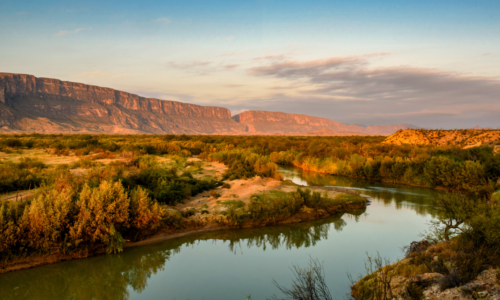
This funding opportunity is currently open! The first application deadline is May 20, 2025.
Upper Colorado River Basin System Conservation and Efficiency Program
The Upper Colorado River Basin System Conservation and Efficiency Program Environmental, Ecosystem, and Habitat Restoration Grant, funded from the remaining $450 million of the Inflation Reduction Act, is dedicated to addressing water issues in the Upper Colorado River Basin. Through a multi-phased roll-out, the second phase of this program known as “Bucket 2” is organized into two components:
 Bucket 2 Environmental Drought Mitigation or “B2E” provides funding to public entities and tribes for projects that provide general environmental benefits or ecosystem / habitat benefits that address issues directly caused by drought.
Bucket 2 Environmental Drought Mitigation or “B2E” provides funding to public entities and tribes for projects that provide general environmental benefits or ecosystem / habitat benefits that address issues directly caused by drought.
- Applications for B2E closed on November 22, 2024.
- The minimum project size that will be considered for funding is $300,000. There is no maximum award ceiling.
- Applicants can download the RFA and prepare and submit an application package with the information outlined in Section D of the RFA, and submit via email to [email protected]
Bucket 2 Upper Basin Environmental Drought Mitigation or “B2E2” aims to identify and fund projects that will restore habitat and assist in species recovery while providing additional water savings benefits to increase resiliency against prolonged drought driven by climate change.
- The funding opportunity closed on January 10, 2025.
- The minimum project size that will be considered for funding is $300,000. There is no maximum award ceiling.
- Applicants can download the RFA and prepare and submit an application package with the information outlined in Section D of the RFA, and submit via email to [email protected]

The B2E application is currently closed.
WaterSMART Grant Application Support & Help Desk

Now more than ever our cities and water utilities need all of the financial support they can get to meet our region’s water challenges. Through our WaterSMART Grant Application Support & Help Desk program, WaterNow can support Colorado water providers with no-cost, hands-on assistance to understand and apply for WaterSMART grants. We strive to increase knowledge and capacity for applying to WaterSMART grants to foster long-term, locally-driven funding pathways for communities, which is why WaterNow will work alongside your organization to help you navigate the application process.
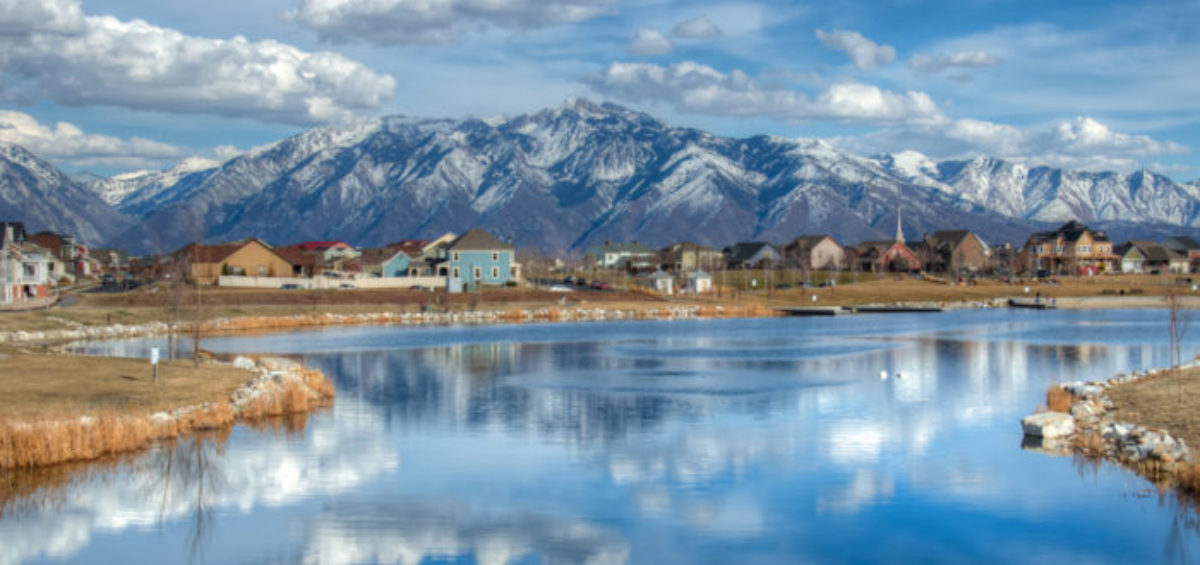
Our support services include, but are not limited to:
- 1-on-1 calls to discuss available grant opportunities and strategize next steps
- Targeted research tasks related to your application
- Application templates that follow the Notice of Funding Opportunity
- Editing and detailed review of your application (Please note that WaterNow is not able to write/draft WaterSMART applications at this time)
- And more! We’ll work with you to determine what kind of support would be most useful to your utility or organization.
If you’re interested in applying to a WaterSMART funding opportunity and would like WaterNow’s assistance, fill out this short form and we’ll be in touch.

Application Tips
- Before applying, review the objectives of the Notice of Funding Opportunity (NOFO), eligible project types and evaluation criteria closely to determine if your proposed project is a good fit for the specific grant opportunity. Reach out directly to the listed USBR Program Coordinator to confirm your project’s eligibility.
- Copy and paste the evaluation criteria from the NOFO into your application to ensure you’re responding fully and clearly to all criteria. Need an application template? Reach out to us to learn more!
- Review the application checklist (Page iii of every NOFO) to ensure that you are submitting a complete application with all required supporting materials.
- Check out this resource for more Grant Writing Tips!
WaterNow has supported dozens of Colorado communities in navigating and applying for the USBR WaterSMART grant which has yielded a number of successful applications. These projects will further municipal water conservation and efficiency efforts, saving thousands of acre-feet of water across the state.
 The City of Alamosa received $500,000 in WEEG funding in FY23 to upgrade the irrigation system for the Cattails Golf Course. These upgrades included installation of a sprinkler system with adjustable nozzles, individual head controls, and weather- related sensors. The project is expected to result in annual water savings of 14 acre-feet per year, which will remain in the Rio Grande system and further improve river health and recreation.
The City of Alamosa received $500,000 in WEEG funding in FY23 to upgrade the irrigation system for the Cattails Golf Course. These upgrades included installation of a sprinkler system with adjustable nozzles, individual head controls, and weather- related sensors. The project is expected to result in annual water savings of 14 acre-feet per year, which will remain in the Rio Grande system and further improve river health and recreation.
 The City of Aspen received $75,000 in SWEP funding in FY21 to add an irrigation efficiency rebate to its existing water efficiency programming. The city will offer rebates to customers who have completed an irrigation assessment, for integration of smart controllers, conversion to drip irrigation and high efficiency sprinkler heads, and replacement of turf with low water use plants. This rebate program will increase water use efficiency within the City’s service area and improve overall water supply reliability in the Roaring Fork Valley.
The City of Aspen received $75,000 in SWEP funding in FY21 to add an irrigation efficiency rebate to its existing water efficiency programming. The city will offer rebates to customers who have completed an irrigation assessment, for integration of smart controllers, conversion to drip irrigation and high efficiency sprinkler heads, and replacement of turf with low water use plants. This rebate program will increase water use efficiency within the City’s service area and improve overall water supply reliability in the Roaring Fork Valley.
 Colorado Springs Utilities received $100,000 in SWEP funding in FY22 to identify affordable housing properties with above average water use and install 570 ultra-high efficiency toilets to replace the existing older, inefficient ones. The project will benefit low-income customers by reducing their annual water costs and improving per capita multi-family water use.
Colorado Springs Utilities received $100,000 in SWEP funding in FY22 to identify affordable housing properties with above average water use and install 570 ultra-high efficiency toilets to replace the existing older, inefficient ones. The project will benefit low-income customers by reducing their annual water costs and improving per capita multi-family water use.
 The City of Fountain received $400,000 in WEEG funding in FY23 to upgrade over 1,000 existing meters to advanced metering infrastructure smart meters and will install seven data collectors to gather and send real-time water meter consumption data. The project is expected to result in annual water savings of 36 acre-feet, which will remain in the Pueblo Reservoir and help improve water reliability in the Arkansas River Basin.
The City of Fountain received $400,000 in WEEG funding in FY23 to upgrade over 1,000 existing meters to advanced metering infrastructure smart meters and will install seven data collectors to gather and send real-time water meter consumption data. The project is expected to result in annual water savings of 36 acre-feet, which will remain in the Pueblo Reservoir and help improve water reliability in the Arkansas River Basin.
 The City of Greeley, CO received $2,000,000 in WEEG funding in FY22 for their Advanced Metering Infrastructure installation project where they converted over 11,000 outdated residential and commercial meters to AMI meters, which are integrated into the City’s SCADA system. The project is expected to result in annual water savings of 1,146 AF by improving metering accuracy and providing customers with near real-time monitoring and alert capabilities that detect high usage and leaks.
The City of Greeley, CO received $2,000,000 in WEEG funding in FY22 for their Advanced Metering Infrastructure installation project where they converted over 11,000 outdated residential and commercial meters to AMI meters, which are integrated into the City’s SCADA system. The project is expected to result in annual water savings of 1,146 AF by improving metering accuracy and providing customers with near real-time monitoring and alert capabilities that detect high usage and leaks.
 The Colorado Rio Grande Restoration Foundation, in partnership with the San Luis Valley Irrigation District, received $1,274,625 in EWRP funding in FY23 to upgrade the diversion infrastructure for the Farmers Union Canal and Rio Grande #1 Ditch in southwestern Colorado to meet agricultural, ecological, and community needs. The project will allow fish to access an additional 1.42 river miles of habitat, restoration of 646 linear feet of stream bank, 524 linear feet of streambed and aquatic habitat, and provide a safe boat passage and more efficiently deliver water to the Farmers Union Canal and Rio Grande #1 Ditch.
The Colorado Rio Grande Restoration Foundation, in partnership with the San Luis Valley Irrigation District, received $1,274,625 in EWRP funding in FY23 to upgrade the diversion infrastructure for the Farmers Union Canal and Rio Grande #1 Ditch in southwestern Colorado to meet agricultural, ecological, and community needs. The project will allow fish to access an additional 1.42 river miles of habitat, restoration of 646 linear feet of stream bank, 524 linear feet of streambed and aquatic habitat, and provide a safe boat passage and more efficiently deliver water to the Farmers Union Canal and Rio Grande #1 Ditch.
This program is made possible by our partners at the Colorado Water Conservation Board.

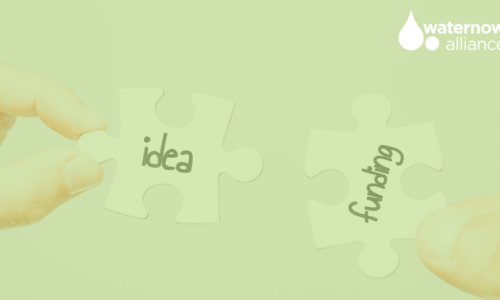
Insights and tips on WaterSMART grant applications from successful Colorado communities.




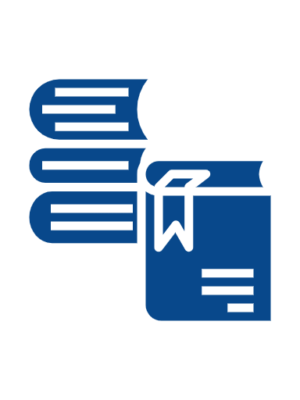


 Tap into Resilience case studies across the country into a 10-part, high-level decision-making framework for deploying localized water infrastructure strategies at larger scale. This guidance can be adapted and used by local communities as the basis for implementing localized water strategies that best fit the community’s particular needs.
Tap into Resilience case studies across the country into a 10-part, high-level decision-making framework for deploying localized water infrastructure strategies at larger scale. This guidance can be adapted and used by local communities as the basis for implementing localized water strategies that best fit the community’s particular needs.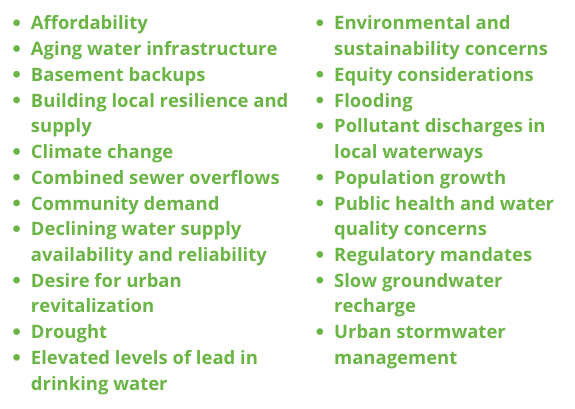 (community demand) to global (climate change) considerations including but not limited to the challenges listed in the box to the right.
(community demand) to global (climate change) considerations including but not limited to the challenges listed in the box to the right.

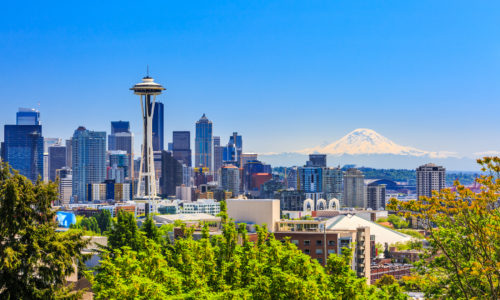
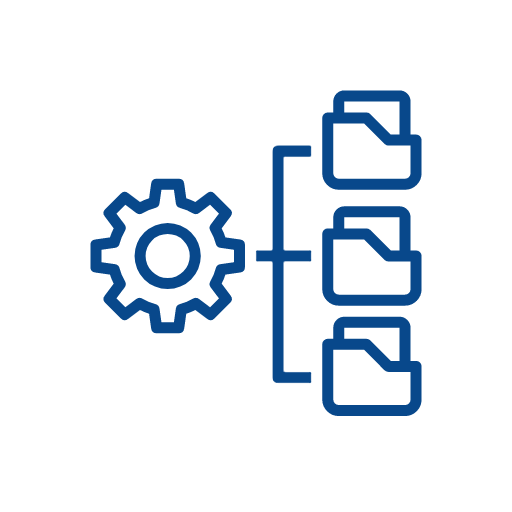 approaches, case studies demonstrate that communities are finding there is sufficient data available to model potential performance with a relatively high degree of confidence. This modeling will allow communities to assess the ability of these solutions to effectively meet water management needs. The data from the case studies show that localized options can perform well.
approaches, case studies demonstrate that communities are finding there is sufficient data available to model potential performance with a relatively high degree of confidence. This modeling will allow communities to assess the ability of these solutions to effectively meet water management needs. The data from the case studies show that localized options can perform well.


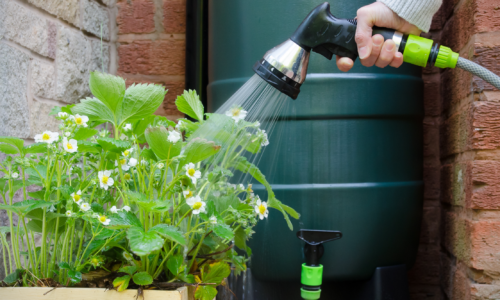



 of the localized infrastructure decision-making framework, we highlight two in particular:
of the localized infrastructure decision-making framework, we highlight two in particular: 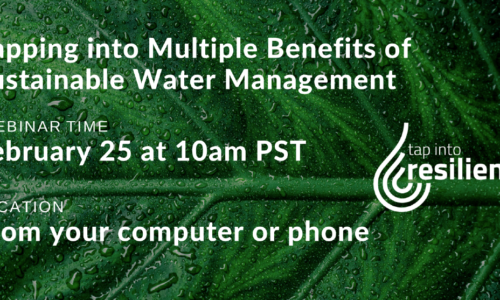
 these or similar planning documents is essential for any project to be considered eligible for capital financing. One of the surest ways for localized infrastructure to be treated on par with more conventional infrastructure approaches is to incorporate these solutions into capital planning. This shift in framing can open up the full range of available funding options — see Part 5 below.
these or similar planning documents is essential for any project to be considered eligible for capital financing. One of the surest ways for localized infrastructure to be treated on par with more conventional infrastructure approaches is to incorporate these solutions into capital planning. This shift in framing can open up the full range of available funding options — see Part 5 below. because the proper matching of expenses and revenues gives a more accurate appraisal of the results of operations, helps to avoid distortion of the financial position of the business, improves the quality of the financial statements, and ensures generational equity so that future ratepayers share in the costs of improvements that provide benefits over time. Further, the GASB interpretation guide uses water efficiency programs as an example of what a utility might choose to capitalize: “…certain period costs (for example, … conservation program costs of providing assets, such as low-flow shower heads, to customers) that are proposed for recovery in future rates.”
because the proper matching of expenses and revenues gives a more accurate appraisal of the results of operations, helps to avoid distortion of the financial position of the business, improves the quality of the financial statements, and ensures generational equity so that future ratepayers share in the costs of improvements that provide benefits over time. Further, the GASB interpretation guide uses water efficiency programs as an example of what a utility might choose to capitalize: “…certain period costs (for example, … conservation program costs of providing assets, such as low-flow shower heads, to customers) that are proposed for recovery in future rates.”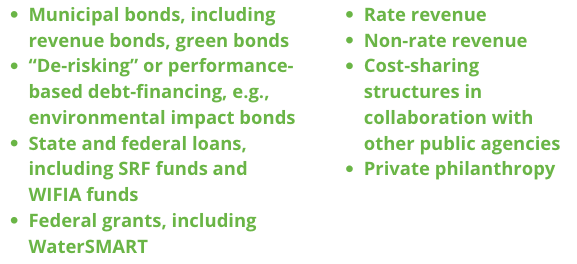 Leveraging one or more of these funding sources to scale investment in localized water solutions is the surest and most expeditious way to deploy adoption of these strategies broadly across a community and more fully realize their benefits.
Leveraging one or more of these funding sources to scale investment in localized water solutions is the surest and most expeditious way to deploy adoption of these strategies broadly across a community and more fully realize their benefits.


 Decentralized strategies, by definition, require partnering with owners of various types of property throughout the community—streets, public buildings and parks, schools, institutions, businesses, industries and residences. Implementing onsite water strategies thus presents unique opportunities for community engagement, but also means that achieving widespread adoption of these strategies must include an intentional and well-resourced program to incorporate stakeholder outreach, education and communication at both the planning and implementation phases.
Decentralized strategies, by definition, require partnering with owners of various types of property throughout the community—streets, public buildings and parks, schools, institutions, businesses, industries and residences. Implementing onsite water strategies thus presents unique opportunities for community engagement, but also means that achieving widespread adoption of these strategies must include an intentional and well-resourced program to incorporate stakeholder outreach, education and communication at both the planning and implementation phases.

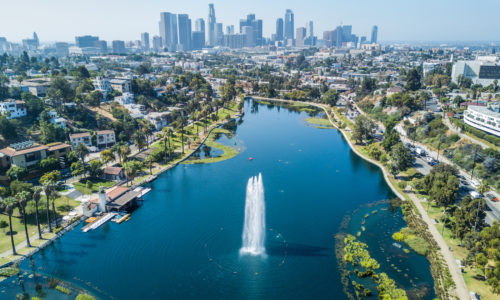

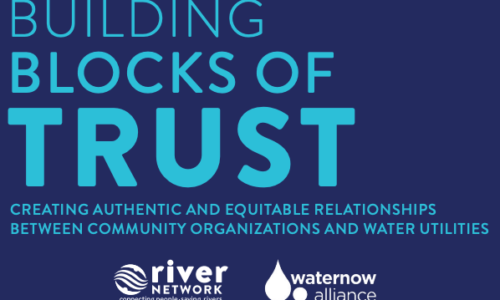
 Like conventional infrastructure, distributed water infrastructure entails implementation complexities such as navigating legal, financial and accounting issues. In addition, different types of localized strategies can entail different types of risks; for example, onsite treatment and reuse systems raise public health issues; leak detection devices sometimes require professional installers raising training and liability challenges; bioswales, green roofs and urban trees require ongoing maintenance (see below). Implementation issues can be more easily addressed by identifying them as early as possible in planning and establishing a process to resolve them.
Like conventional infrastructure, distributed water infrastructure entails implementation complexities such as navigating legal, financial and accounting issues. In addition, different types of localized strategies can entail different types of risks; for example, onsite treatment and reuse systems raise public health issues; leak detection devices sometimes require professional installers raising training and liability challenges; bioswales, green roofs and urban trees require ongoing maintenance (see below). Implementation issues can be more easily addressed by identifying them as early as possible in planning and establishing a process to resolve them. agreements, setting
agreements, setting 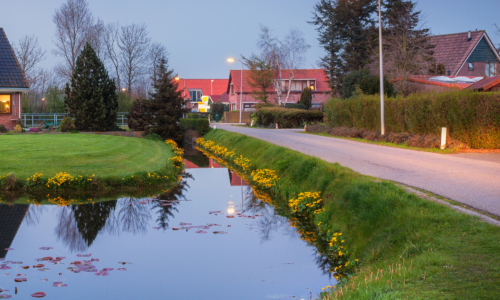
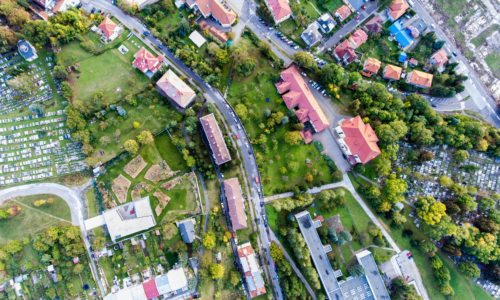
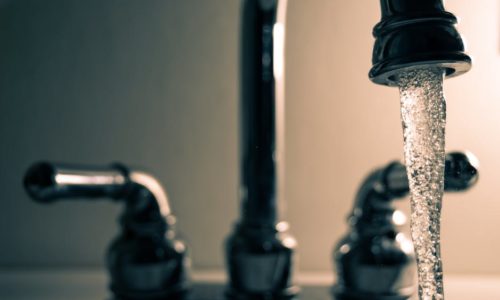
 gaps in information, resource, expertise or capacity to explore let alone implement newer approaches.
gaps in information, resource, expertise or capacity to explore let alone implement newer approaches.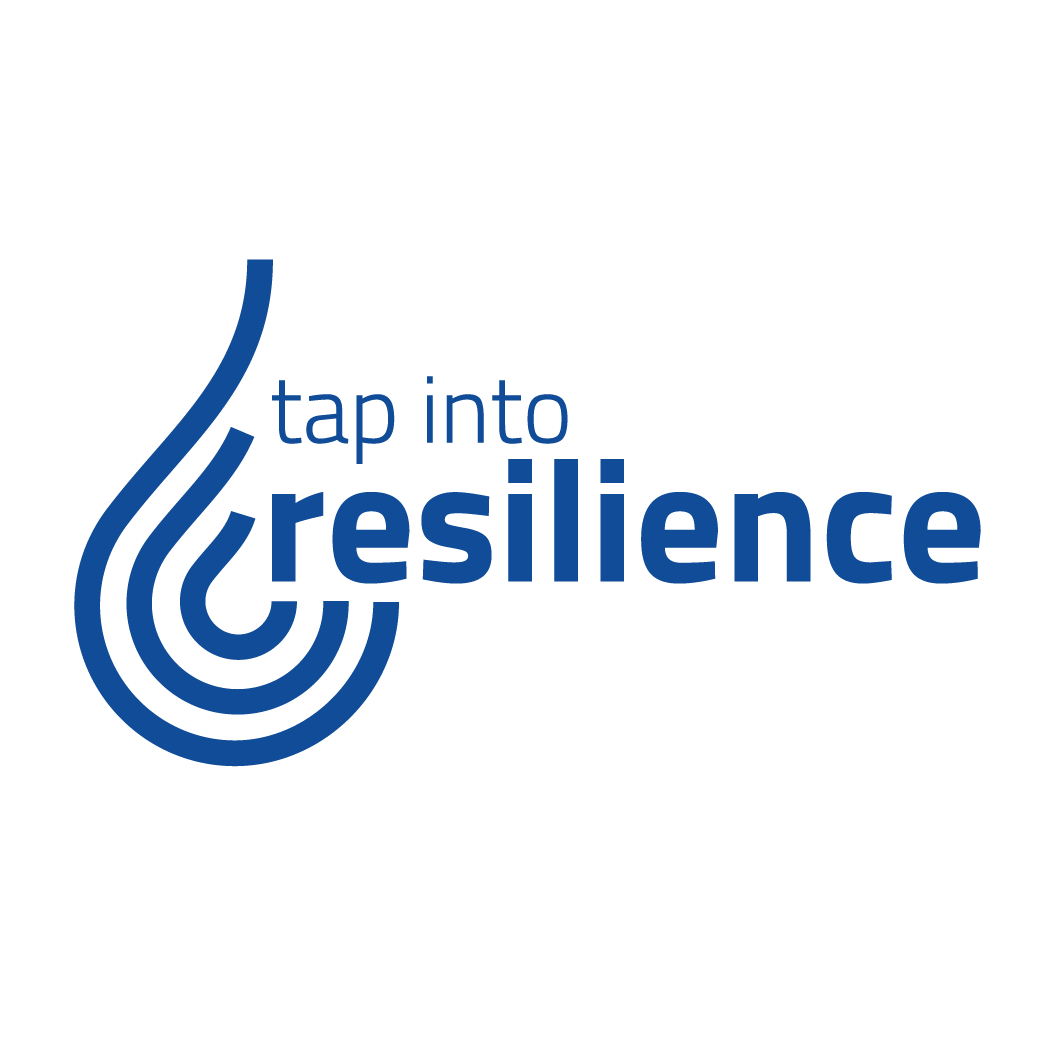


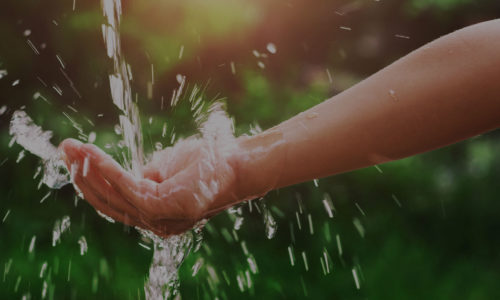


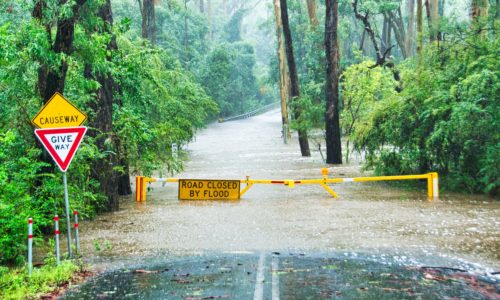
 about how to ensure that investments in distributed systems are properly maintained to ensure functionality over time. Whether the best approach is to pass this responsibility on to property owners or for the utility to retain it will necessarily be situation-specific. Case studies do, however, provide some guidance for mitigating this challenge, such as entering into operation and maintenance contracts with landowners.
about how to ensure that investments in distributed systems are properly maintained to ensure functionality over time. Whether the best approach is to pass this responsibility on to property owners or for the utility to retain it will necessarily be situation-specific. Case studies do, however, provide some guidance for mitigating this challenge, such as entering into operation and maintenance contracts with landowners.


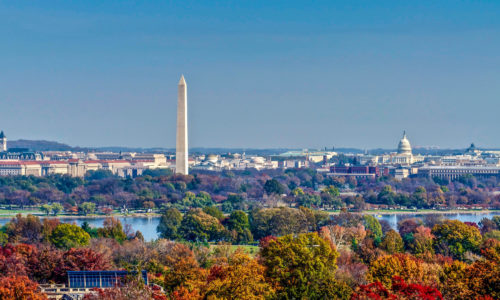
 One of the best ways to build public, utility and decision-maker confidence in the efficacy of distributed systems is meaningful data demonstrating value and establishing that these investments are performing as intended.
One of the best ways to build public, utility and decision-maker confidence in the efficacy of distributed systems is meaningful data demonstrating value and establishing that these investments are performing as intended.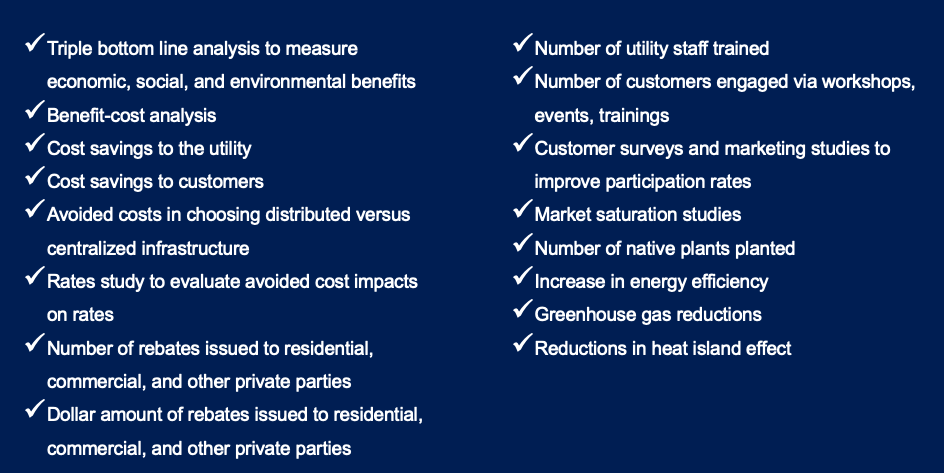
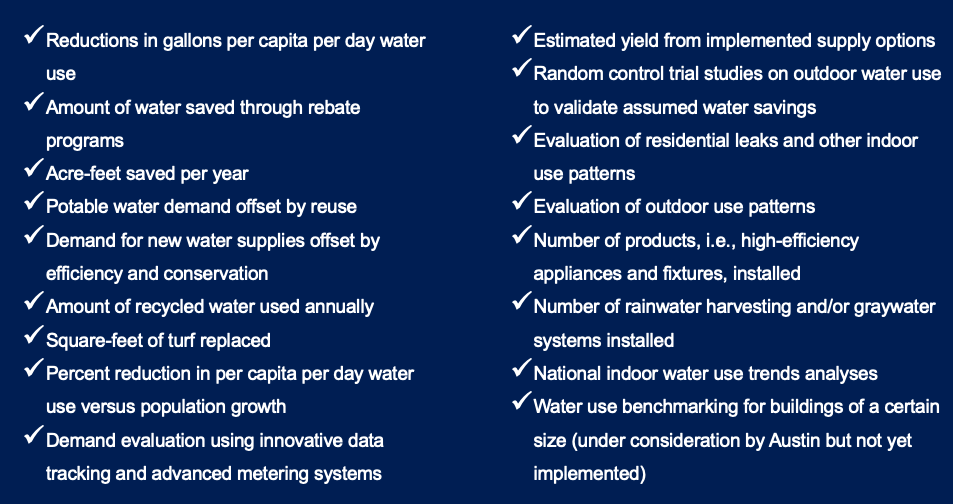
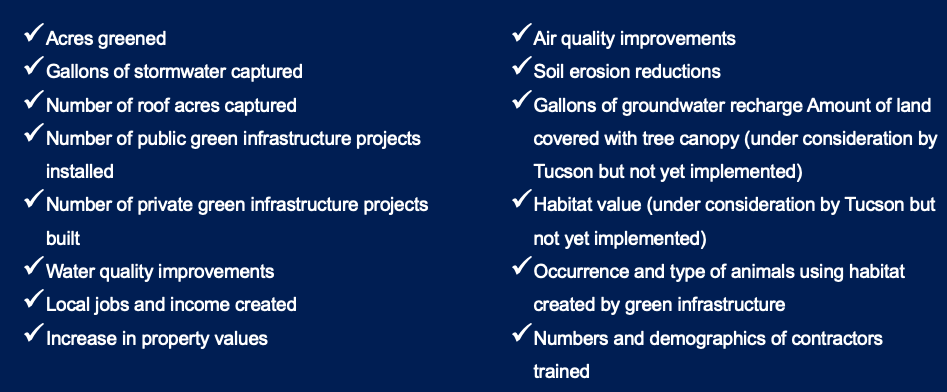

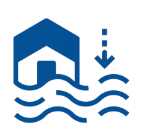 flooding, to drought to basement backups to water contamination and more—all of which are exacerbated by climate change.
flooding, to drought to basement backups to water contamination and more—all of which are exacerbated by climate change.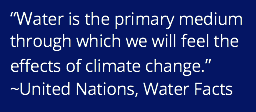 urban stormwater runoff from separate sewer systems continues to be a major cause of impairments to surface water quality and adverse impacts to public health. Climate change puts additional pressure on these challenges, increasing the likelihood of storms and floods in some locations, and exacerbating drought and heat in others.
urban stormwater runoff from separate sewer systems continues to be a major cause of impairments to surface water quality and adverse impacts to public health. Climate change puts additional pressure on these challenges, increasing the likelihood of storms and floods in some locations, and exacerbating drought and heat in others.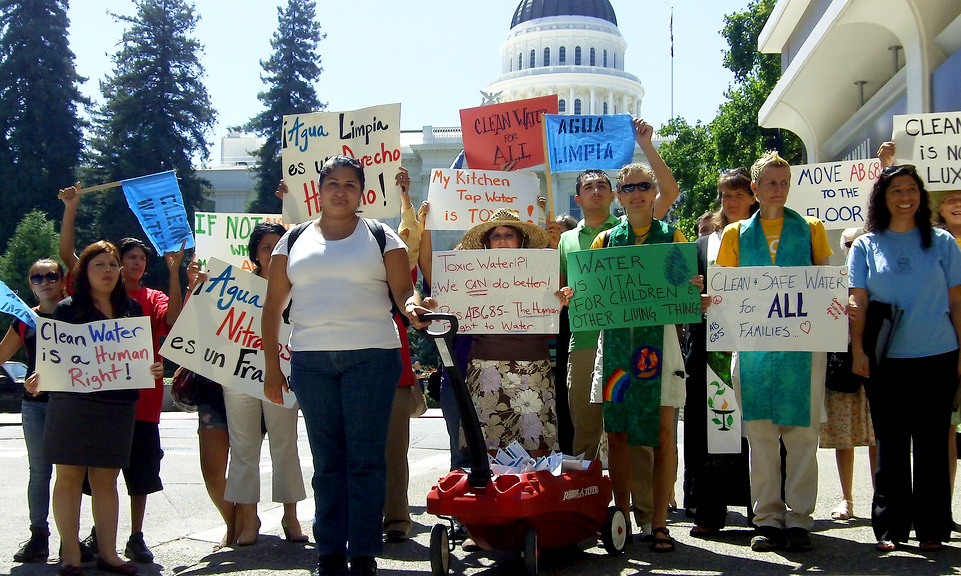
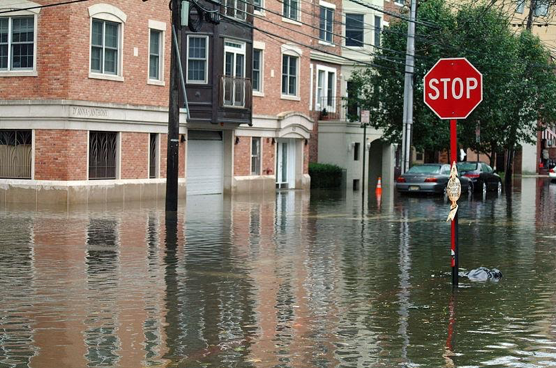 Recognizing the reality of frontline communities is an important first step in meeting these communities’ pressing needs and advancing water resiliency at the local level.
Recognizing the reality of frontline communities is an important first step in meeting these communities’ pressing needs and advancing water resiliency at the local level. 

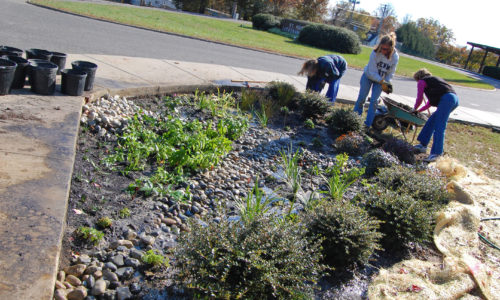

 As concerns about water resiliancy are rising to the fore, utilities and community organizations alike are working to center the issues faci
As concerns about water resiliancy are rising to the fore, utilities and community organizations alike are working to center the issues faci Additional state-level policies, resolutions, and plans related to drinking water can be found in River Network’s
Additional state-level policies, resolutions, and plans related to drinking water can be found in River Network’s 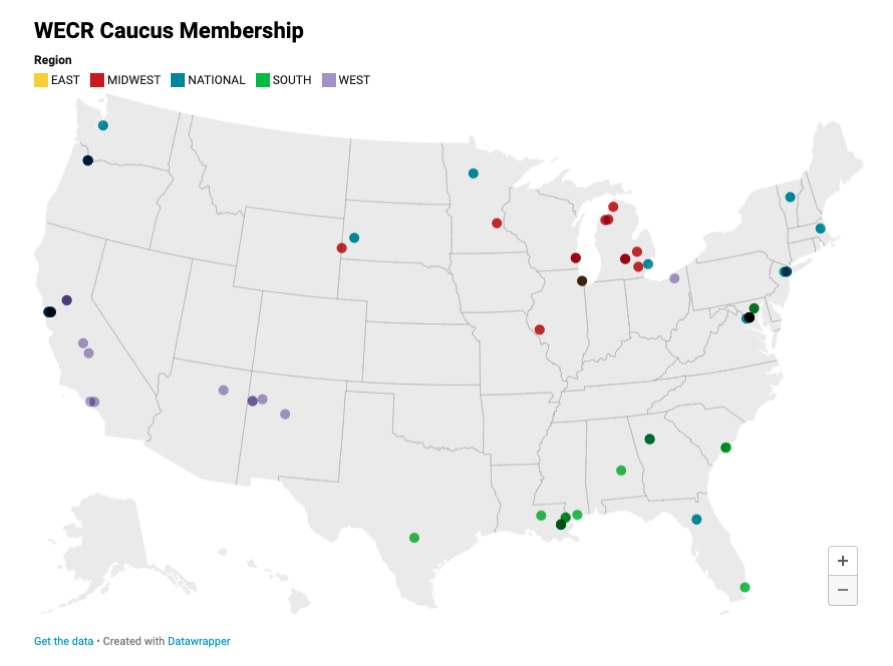 and understanding of water challenges, advocates for policy strategies, and enables members to deliver on water resiliency results for their communities. The Caucus primarily focuses on federal advocacy, and also fosters peer learning, tool and knowledge development, and facilitates shared local, state, and tribal advocacy. The Caucus’ advocacy helped create the first federal
and understanding of water challenges, advocates for policy strategies, and enables members to deliver on water resiliency results for their communities. The Caucus primarily focuses on federal advocacy, and also fosters peer learning, tool and knowledge development, and facilitates shared local, state, and tribal advocacy. The Caucus’ advocacy helped create the first federal 
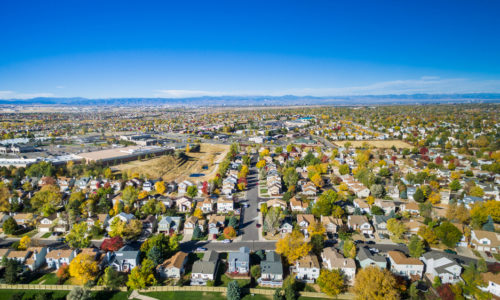
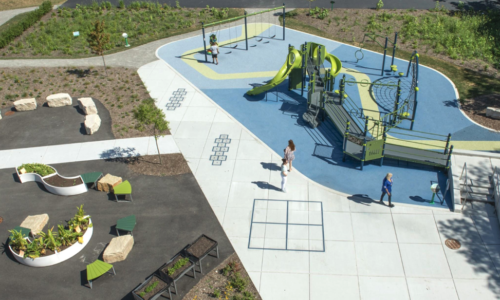



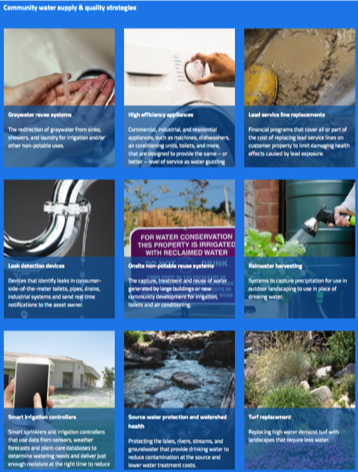 such as high efficiency appliances, graywater reuse systems, lead service line replacements, leak detection devices, onsite non-potable reuse systems, rainwater harvesting, smart irrigation controllers, turf replacement, and source water protection and watershed health.
such as high efficiency appliances, graywater reuse systems, lead service line replacements, leak detection devices, onsite non-potable reuse systems, rainwater harvesting, smart irrigation controllers, turf replacement, and source water protection and watershed health.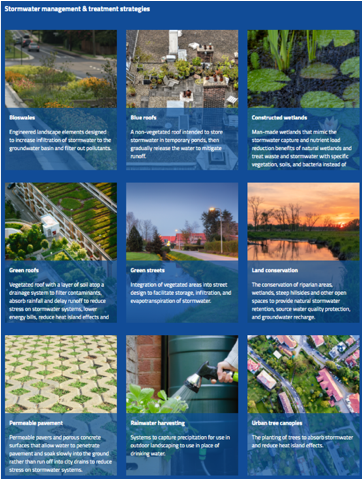 bioswales, blue and green roofs, constructed wetlands, green streets, land conservation, permeable pavement, rainwater harvesting, and urban tree canopies.
bioswales, blue and green roofs, constructed wetlands, green streets, land conservation, permeable pavement, rainwater harvesting, and urban tree canopies.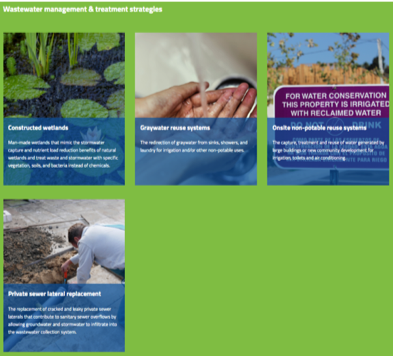
 In addition to these water management benefits, localized infrastructure provides much needed co-benefits to frontline communities, including:
In addition to these water management benefits, localized infrastructure provides much needed co-benefits to frontline communities, including: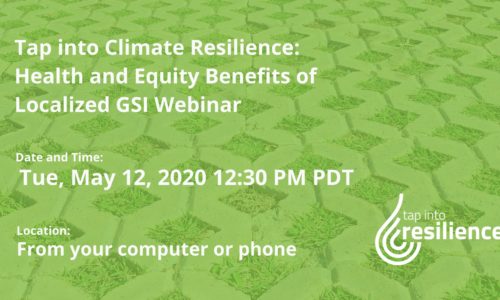

 Private properties of various kinds represent roughly 60% of the land mass of most cities and towns in the U.S. So large-scale adoption of onsite localized water infrastructure that could generate multiple benefits for low income and majority minority communities depends on successful partnering with homeowners, businesses, and institutions of all kinds. These partnerships are most successful when the city, town or utility develops a specific, intentional approach to
Private properties of various kinds represent roughly 60% of the land mass of most cities and towns in the U.S. So large-scale adoption of onsite localized water infrastructure that could generate multiple benefits for low income and majority minority communities depends on successful partnering with homeowners, businesses, and institutions of all kinds. These partnerships are most successful when the city, town or utility develops a specific, intentional approach to 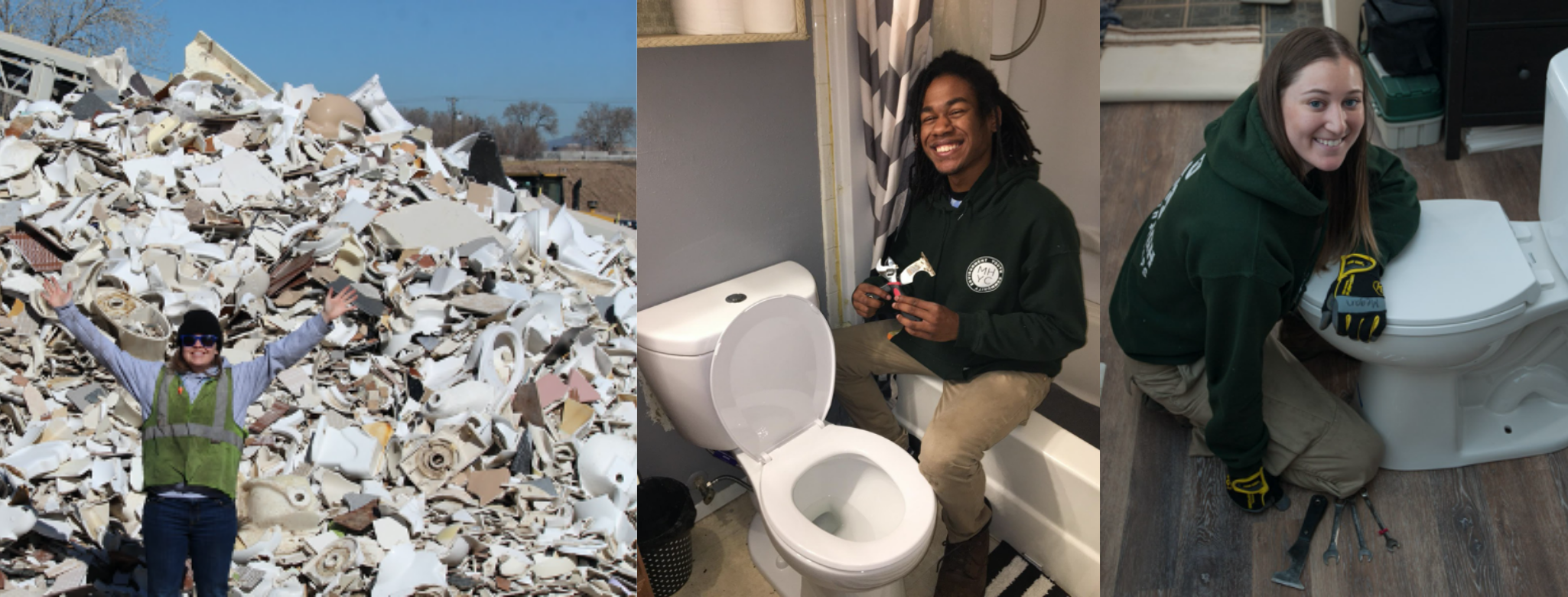
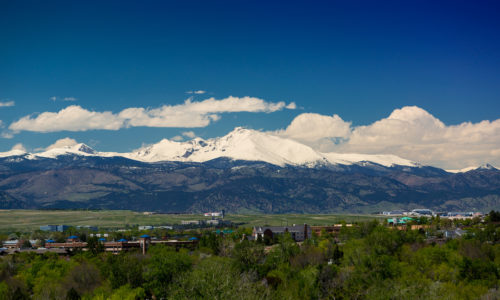
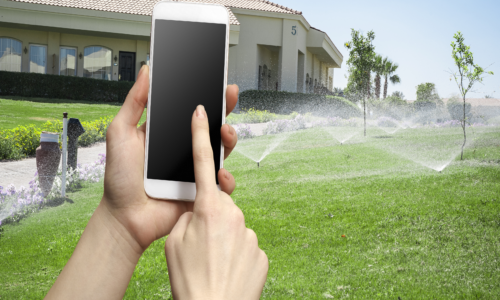

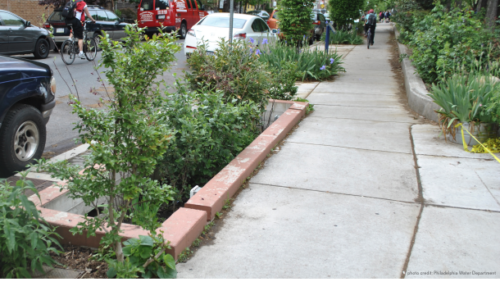
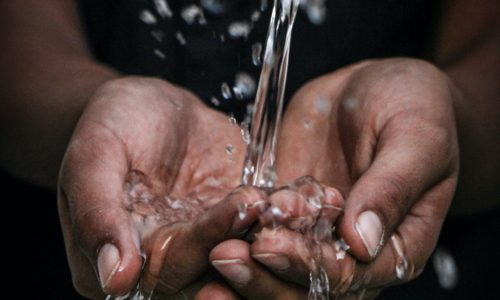
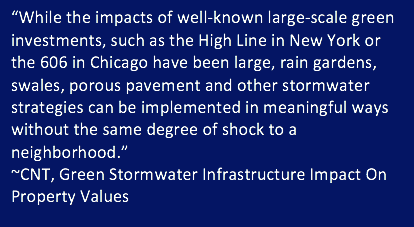 gentrification for a several reasons, which are in line with the strategies outlined above. The green infrastructure movement in New Orleans is rooted in black and brown neighborhoods, and the people leading the work are black-lead community organizations. Local utilities are working with these community groups, following their lead. Further, GSI has been implemented with a focus on workforce development for people of color. And the way the city is prioritizing siting for green infrastructure accounts not only for flooding benefits but also for where the investment are most needed from a community perspective.
gentrification for a several reasons, which are in line with the strategies outlined above. The green infrastructure movement in New Orleans is rooted in black and brown neighborhoods, and the people leading the work are black-lead community organizations. Local utilities are working with these community groups, following their lead. Further, GSI has been implemented with a focus on workforce development for people of color. And the way the city is prioritizing siting for green infrastructure accounts not only for flooding benefits but also for where the investment are most needed from a community perspective. Frontline communities that have never been connected to centralized drinking water or sewer systems for various reasons confront additional, complex challenges. For these communities, and the utilities that serve them, the path to health and safety often lies in finding ways to connect to existing centralized systems through consolidation and/or regionalization to create a combined system serving multiple jurisdictions.
Frontline communities that have never been connected to centralized drinking water or sewer systems for various reasons confront additional, complex challenges. For these communities, and the utilities that serve them, the path to health and safety often lies in finding ways to connect to existing centralized systems through consolidation and/or regionalization to create a combined system serving multiple jurisdictions.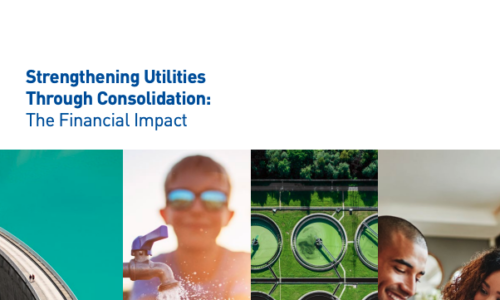
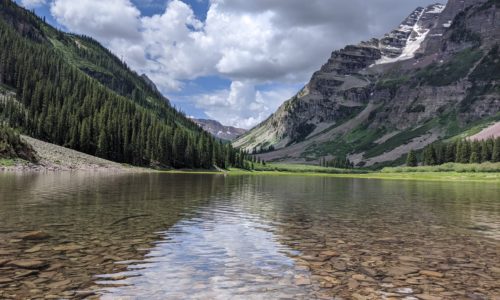
 Shutting off water service for non-payment of water utility bills has been standard utility practice nationwide for decades. This approach has been criticized for many years—water and sanitation are basic human needs. However, the COVID-19 pandemic thrust the issue into public consciousness and debate at a new level and there is a growing consensus, although by no means unanimity, that it is crucial for water utilities to develop strategies to avoid water shutoffs, and to develop alternatives to address non-payment of water service bills. The issue is particularly acute in frontline communities where residents can be especially vulnerable to shutoffs.
Shutting off water service for non-payment of water utility bills has been standard utility practice nationwide for decades. This approach has been criticized for many years—water and sanitation are basic human needs. However, the COVID-19 pandemic thrust the issue into public consciousness and debate at a new level and there is a growing consensus, although by no means unanimity, that it is crucial for water utilities to develop strategies to avoid water shutoffs, and to develop alternatives to address non-payment of water service bills. The issue is particularly acute in frontline communities where residents can be especially vulnerable to shutoffs. “public-private partnership” is often a source of confusion. This term is used to describe a variety of arrangements between governments and private sector organizations from full privatization of formerly public municipal water providers, to outsourcing, grants, leases, asset sales, and others. Learn more about partnership types and considerations before entering into a public-private partnership
“public-private partnership” is often a source of confusion. This term is used to describe a variety of arrangements between governments and private sector organizations from full privatization of formerly public municipal water providers, to outsourcing, grants, leases, asset sales, and others. Learn more about partnership types and considerations before entering into a public-private partnership 
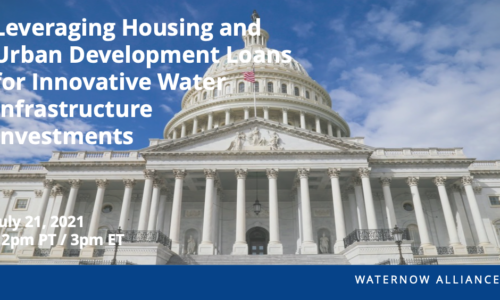
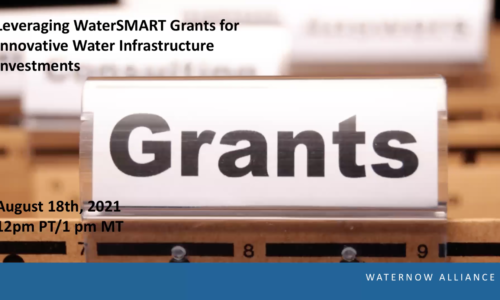
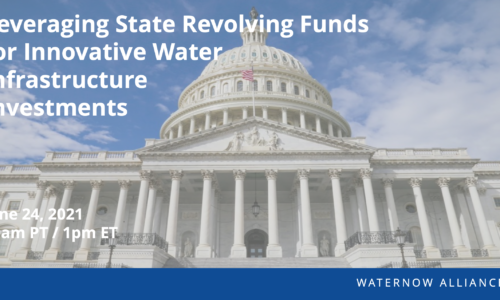
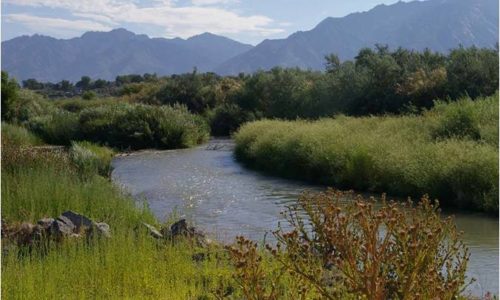


 Inter-generational equity is the idea that water infrastructure costs should be borne by both current and future ratepayers because the benefits of these investments are enjoyed by both. The primary vehicle for advancing inter-generational resiliency is public borrowing, often in the form of municipal bonds and/or other low cost capital. For example, cities and utilities will typically finance gray infrastructure such as water treatment facilities or stormwater tunnels by floating municipal bonds; they use the bond proceeds as capital to pay for the upfront construction costs, and amortize repayment of the loan over the 30-year (or more) life of the bonds. Thus, the cost of long-lived infrastructure is not borne entirely, or even primarily, by the ratepayers at the time of construction, but is instead shared by ratepayers across the decades that the infrastructure is providing community benefits.
Inter-generational equity is the idea that water infrastructure costs should be borne by both current and future ratepayers because the benefits of these investments are enjoyed by both. The primary vehicle for advancing inter-generational resiliency is public borrowing, often in the form of municipal bonds and/or other low cost capital. For example, cities and utilities will typically finance gray infrastructure such as water treatment facilities or stormwater tunnels by floating municipal bonds; they use the bond proceeds as capital to pay for the upfront construction costs, and amortize repayment of the loan over the 30-year (or more) life of the bonds. Thus, the cost of long-lived infrastructure is not borne entirely, or even primarily, by the ratepayers at the time of construction, but is instead shared by ratepayers across the decades that the infrastructure is providing community benefits.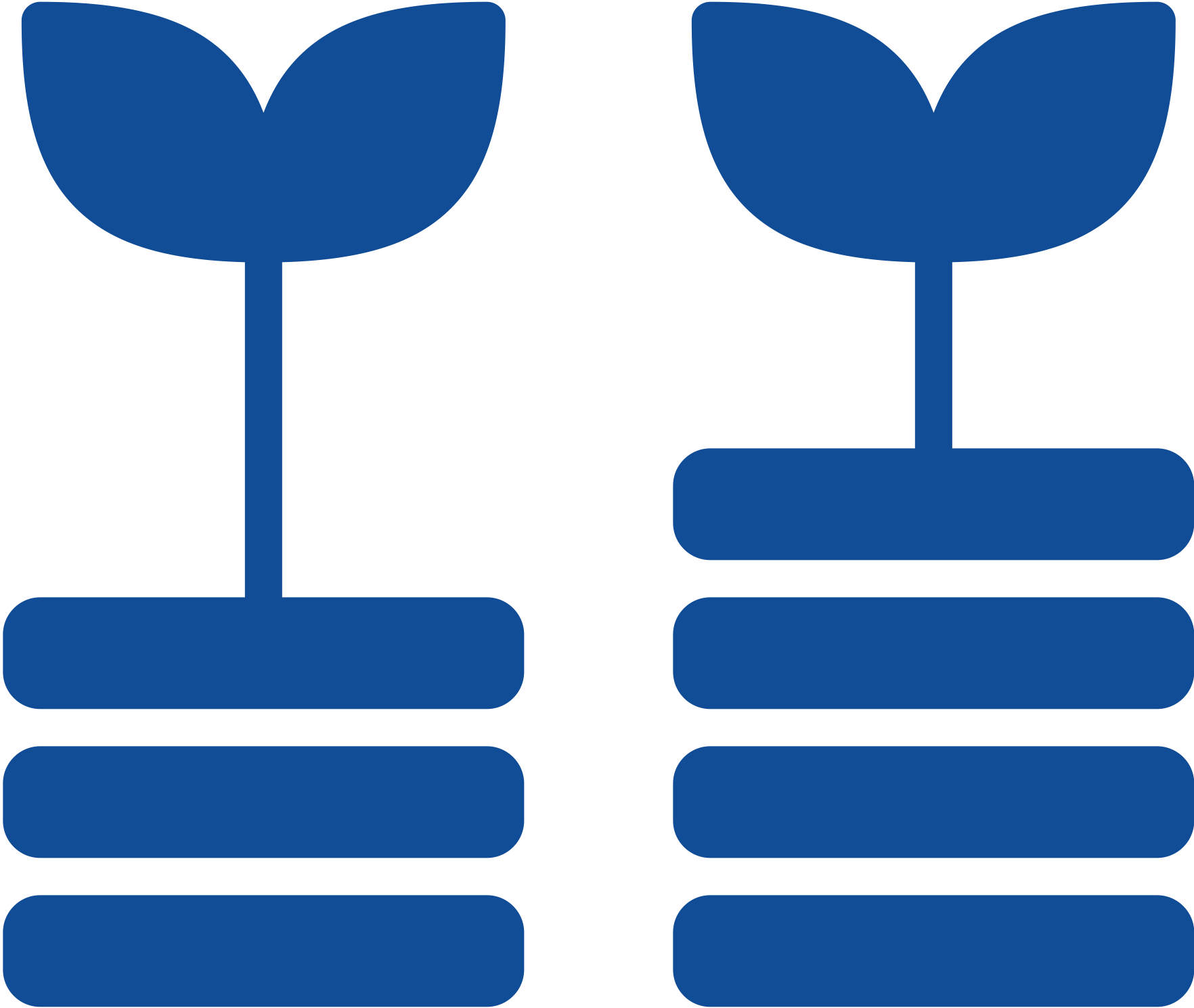 For example, if a utility with a $70 million annual budget were considering investing $10 million in a major direct installation program to provide high efficiency appliances for income qualified renters and homeowners, the utility would have to raise rates 14% to pay for the program out of its annual operating budget. If instead the utility debt-financed the program and paid for it over 20 years, less than a 1% rate increase would be needed to implement the same $10 million direct installation program—a much more affordable approach. At the same time, the utility customers eligible for the program can likely
For example, if a utility with a $70 million annual budget were considering investing $10 million in a major direct installation program to provide high efficiency appliances for income qualified renters and homeowners, the utility would have to raise rates 14% to pay for the program out of its annual operating budget. If instead the utility debt-financed the program and paid for it over 20 years, less than a 1% rate increase would be needed to implement the same $10 million direct installation program—a much more affordable approach. At the same time, the utility customers eligible for the program can likely 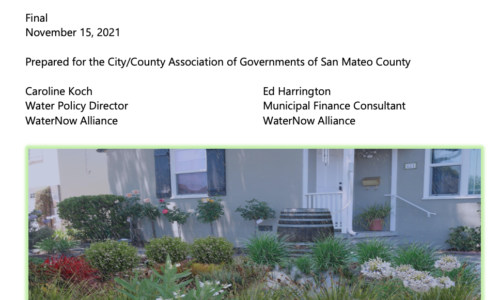
 There are considerable resources available to support local water utilities and water resource agencies. Key to both navigating and accessing those resources is having a clear-eyed vision of what specifically would be most needed and useful. Utilities serving frontline communities often face a range of capacity challenges, including:
There are considerable resources available to support local water utilities and water resource agencies. Key to both navigating and accessing those resources is having a clear-eyed vision of what specifically would be most needed and useful. Utilities serving frontline communities often face a range of capacity challenges, including: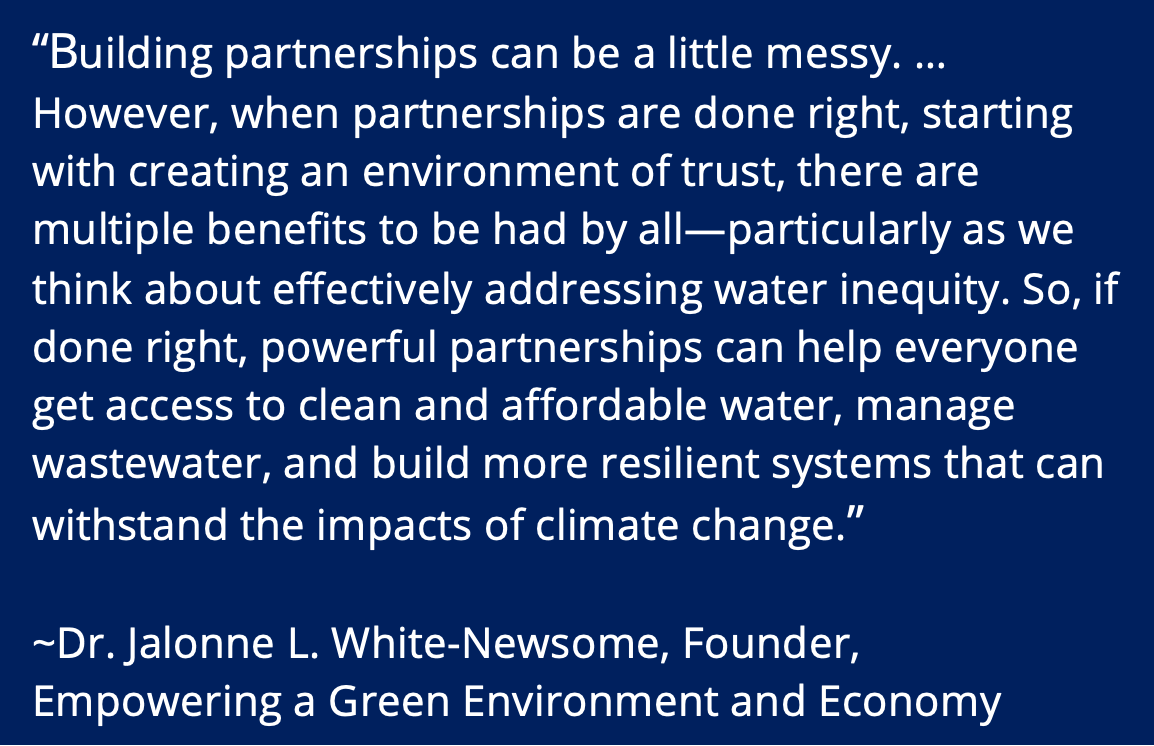 public, extend and supplement limited utility resources, and advance the goal of an equitable water future for everyone.
public, extend and supplement limited utility resources, and advance the goal of an equitable water future for everyone.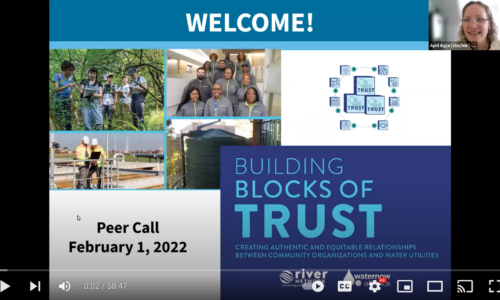
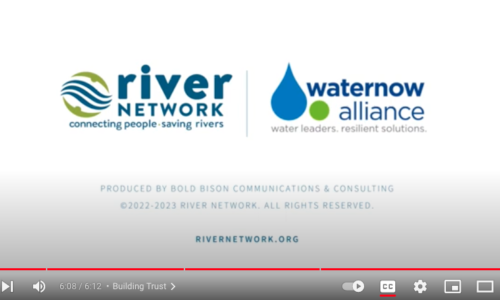
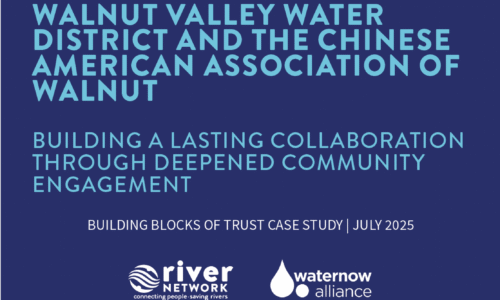
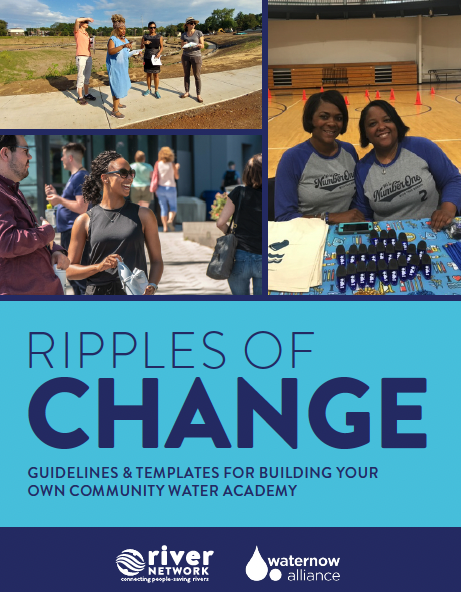 To achieve equitable and sustainable water systems and increased public investment in water infrastructure, strong and authentic relationships between local community groups and water utilities, built on trust, are critical. River Network and the WaterNow Alliance went to community organizations and water utilities around the country who have formed successful partnerships to learn what it takes. In
To achieve equitable and sustainable water systems and increased public investment in water infrastructure, strong and authentic relationships between local community groups and water utilities, built on trust, are critical. River Network and the WaterNow Alliance went to community organizations and water utilities around the country who have formed successful partnerships to learn what it takes. In 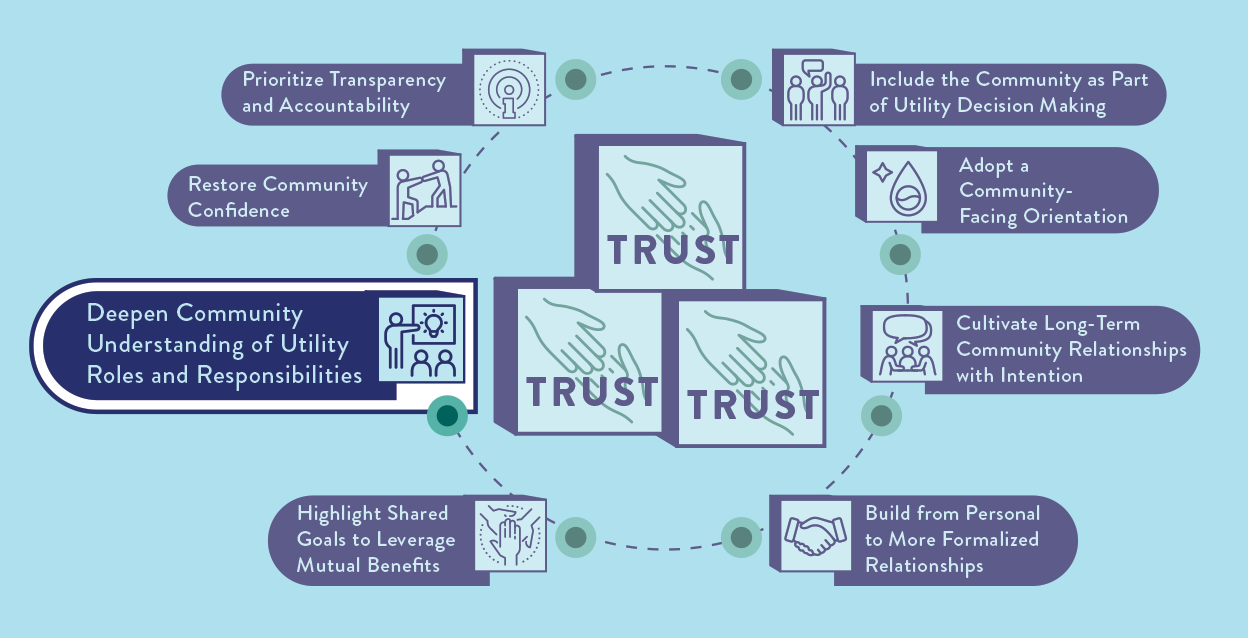
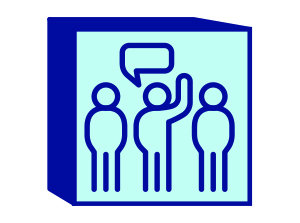 A Community Water Academy works best for communities where community members and water utility managers and/or staff are both willing to engage to create a forum to build trust around a common purpose or issue. This forum should be a conducive environment that emphasizes inclusion, open and respectful communication, active listening, mutual understanding, constructive feedback, and collaborative brainstorming. In thinking about the purpose of the Community Water Academy, consider what guidelines to set to ensure that discussions are focused and purposeful. Water utility managers and/or staff and community members alike should be involved in developing and delivering the workshop to identify and reach shared outcomes. To determine whether a Community Water Academy is a good fit for your community a few considerations are listed below.
A Community Water Academy works best for communities where community members and water utility managers and/or staff are both willing to engage to create a forum to build trust around a common purpose or issue. This forum should be a conducive environment that emphasizes inclusion, open and respectful communication, active listening, mutual understanding, constructive feedback, and collaborative brainstorming. In thinking about the purpose of the Community Water Academy, consider what guidelines to set to ensure that discussions are focused and purposeful. Water utility managers and/or staff and community members alike should be involved in developing and delivering the workshop to identify and reach shared outcomes. To determine whether a Community Water Academy is a good fit for your community a few considerations are listed below.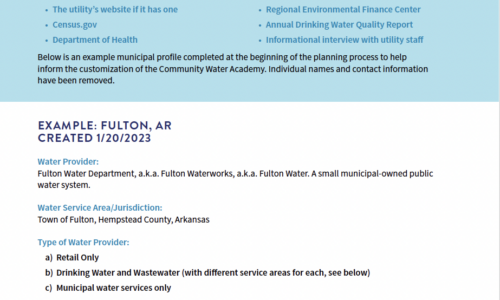
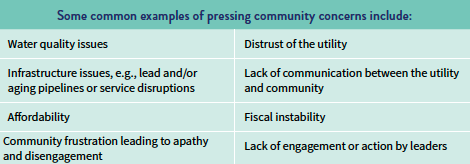
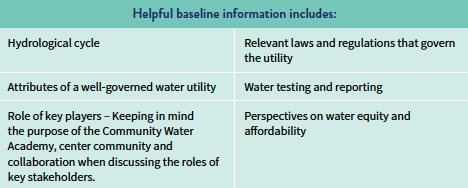
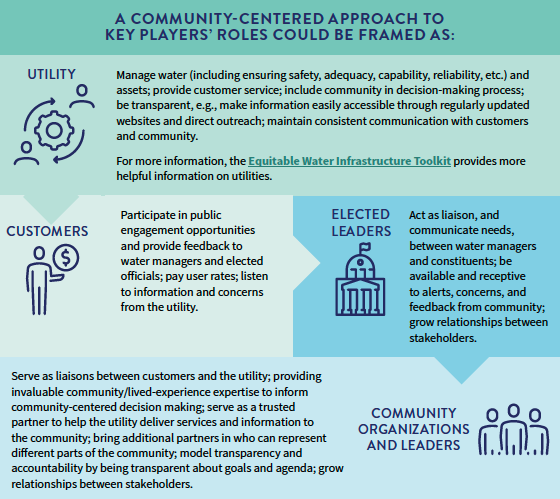

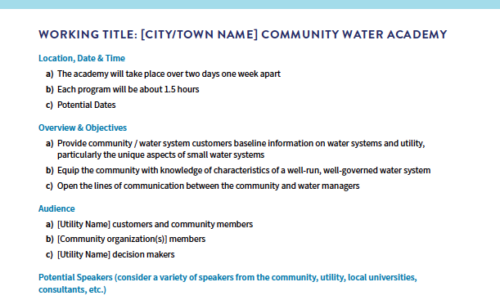
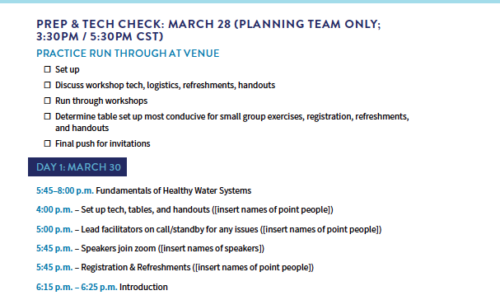
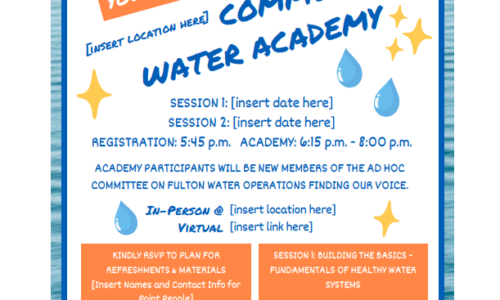




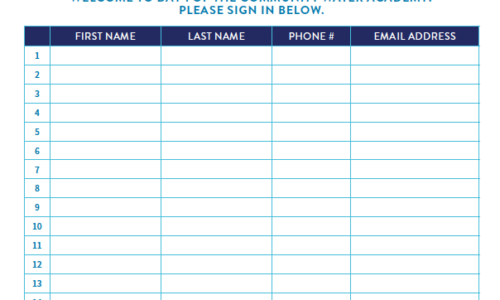

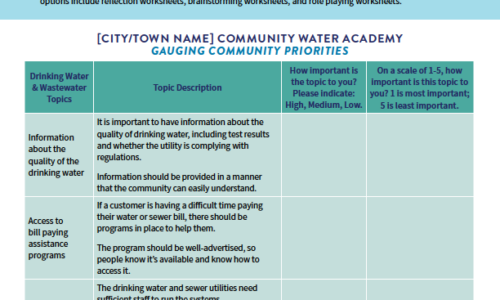
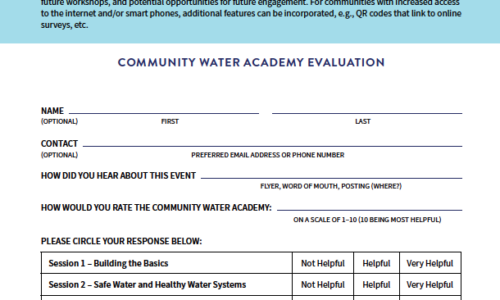


 service has become a standard utility practice for addressing non-payment challenges.
service has become a standard utility practice for addressing non-payment challenges.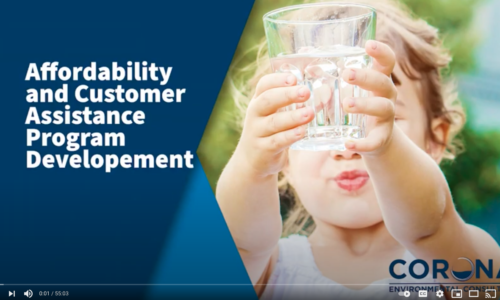

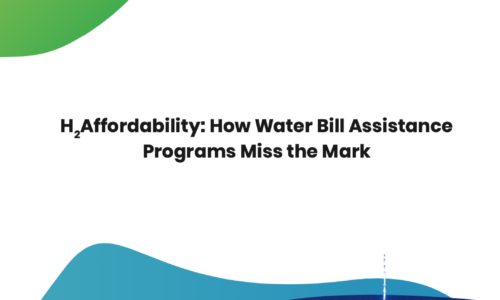
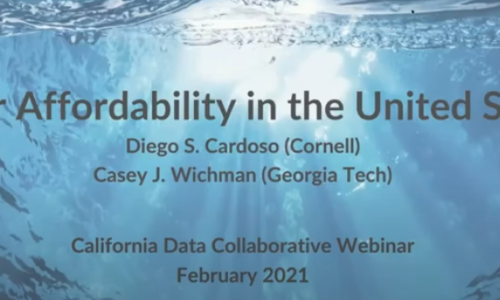
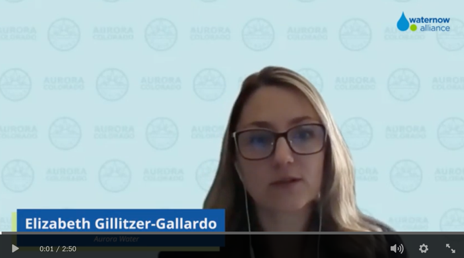





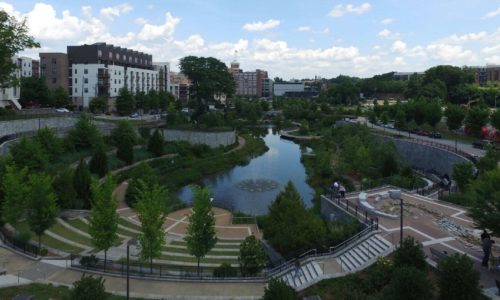
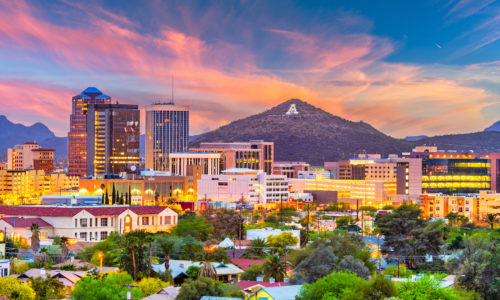


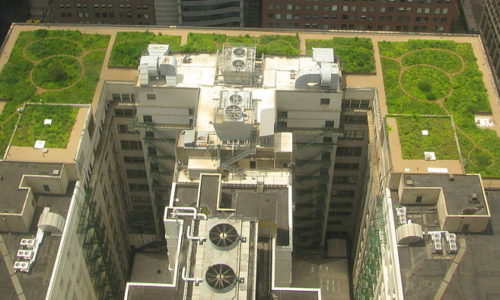



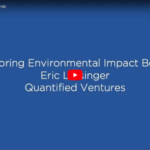
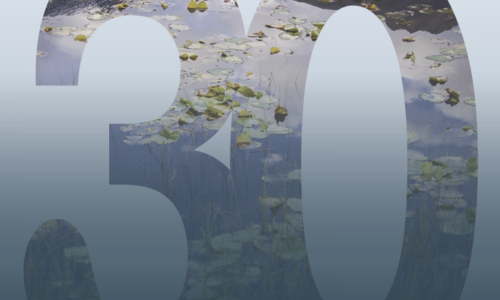
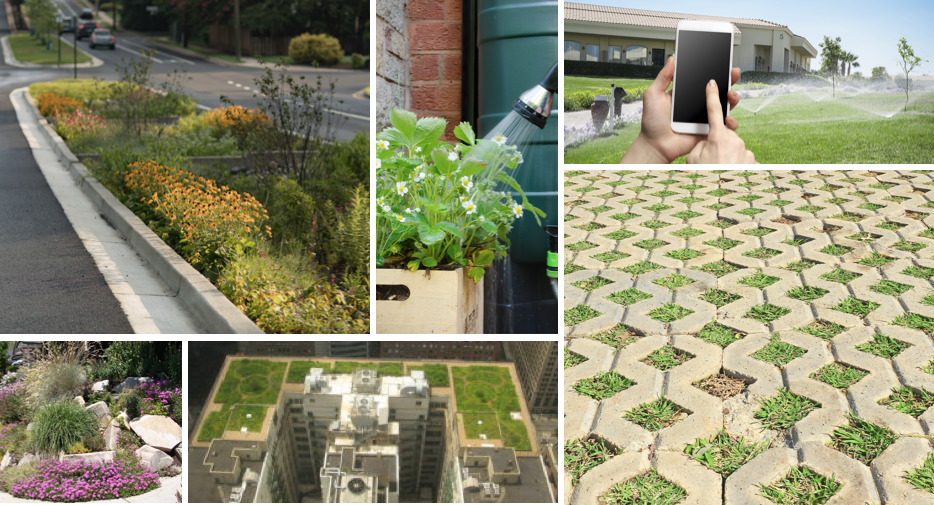
 easements and leasehold interests.
easements and leasehold interests. 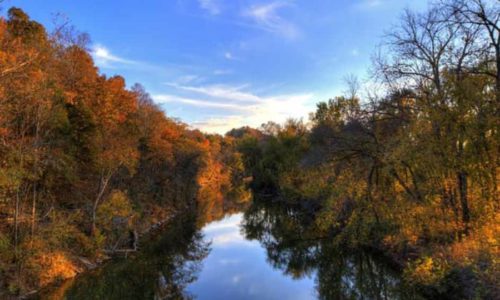
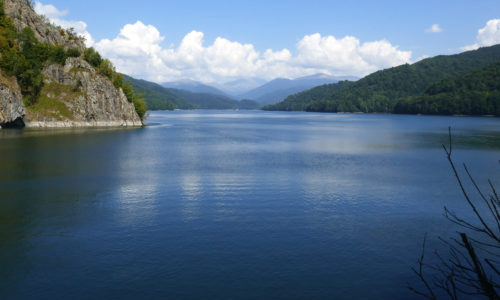
 Weighted Average Maturity
Weighted Average Maturity Broadly speaking, “capital expenditures” under Generally Accepted Accounting Principles (GAAP) are expenditures for fixed or capital assets.
Broadly speaking, “capital expenditures” under Generally Accepted Accounting Principles (GAAP) are expenditures for fixed or capital assets. 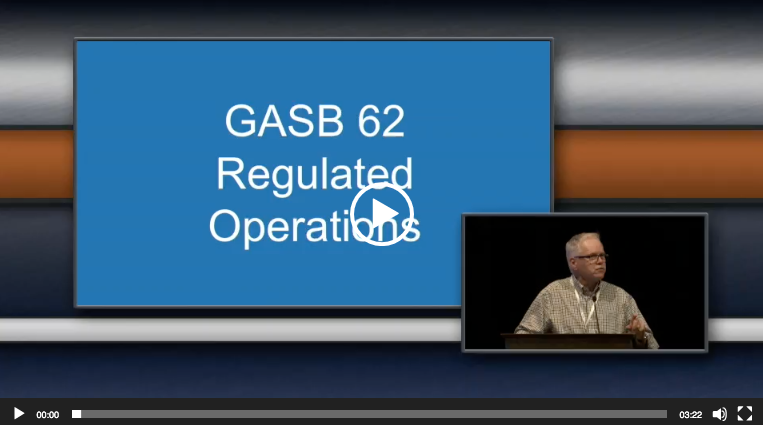
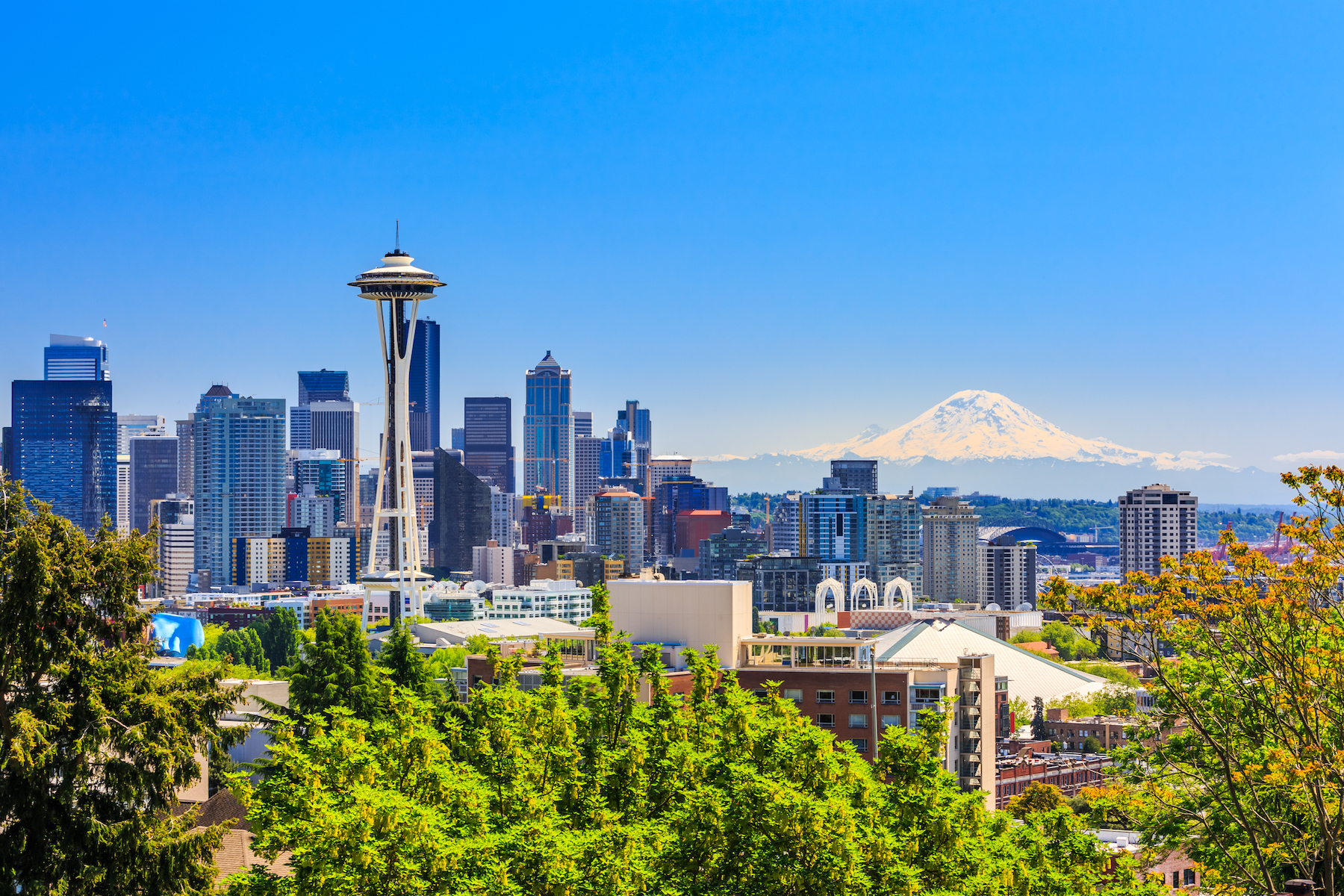
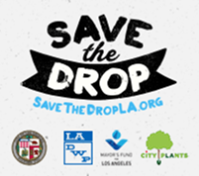
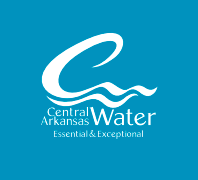

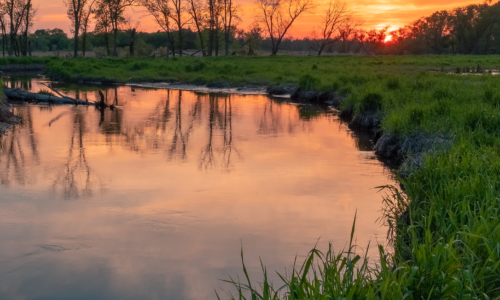
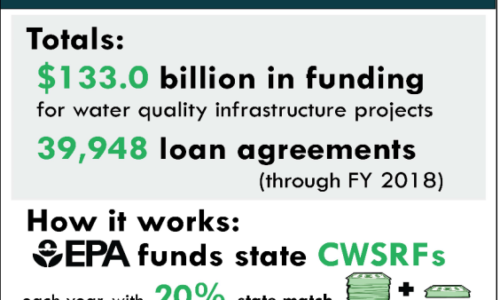
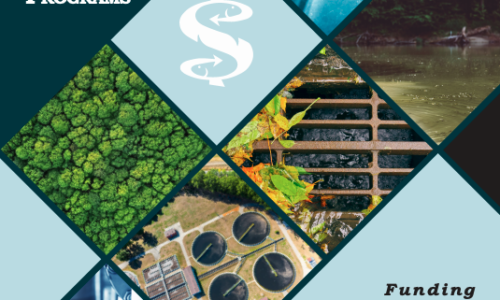
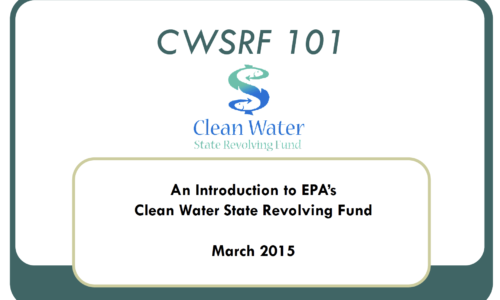
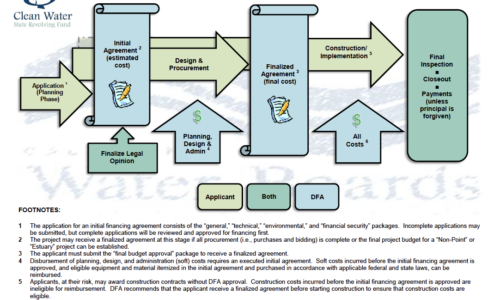
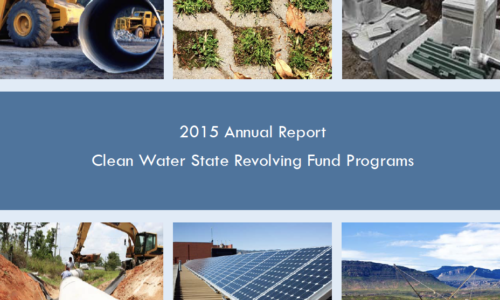
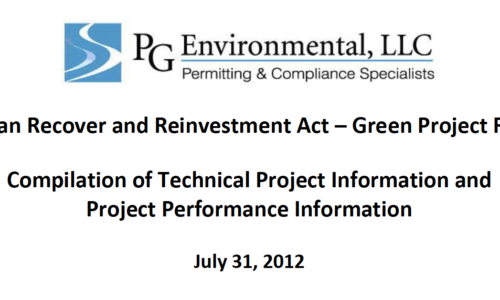
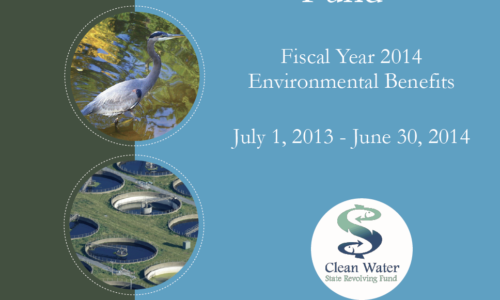

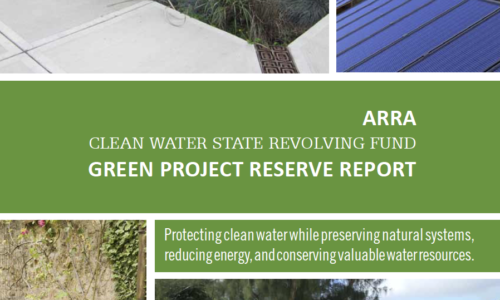
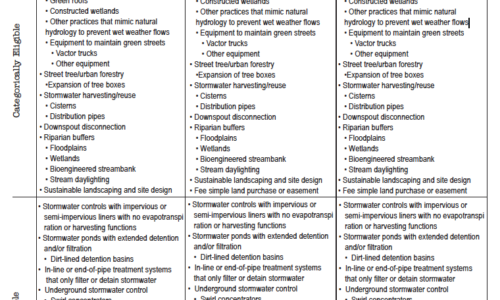

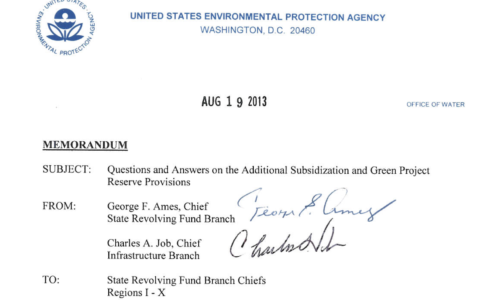
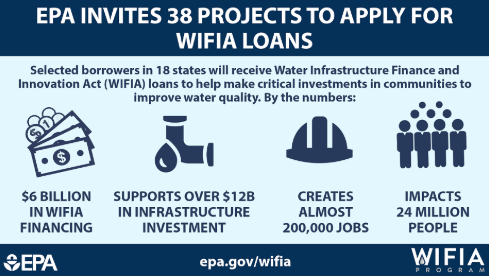


 The WaterSMART program was created to address the Western United States’ serious water challenges – widespread drought, increased population, aging infrastructure, and environmental water requirements that all place strain on water resources. The WaterSMART Program funds local water management programs that seek to conserve and use water more efficiently, mitigate conflict risk in areas at a high risk of future water conflict, or accomplish other benefits that contribute to water supply reliability, among other objectives.
The WaterSMART program was created to address the Western United States’ serious water challenges – widespread drought, increased population, aging infrastructure, and environmental water requirements that all place strain on water resources. The WaterSMART Program funds local water management programs that seek to conserve and use water more efficiently, mitigate conflict risk in areas at a high risk of future water conflict, or accomplish other benefits that contribute to water supply reliability, among other objectives.











 The Environmental Water Resource Projects (EWRP) fund projects focused on benefitting ecological values, while increasing the reliability of water resources. Eligible project types include:
The Environmental Water Resource Projects (EWRP) fund projects focused on benefitting ecological values, while increasing the reliability of water resources. Eligible project types include:

 continue to deliver water and power during a drought and should decrease vulnerabilities and costs of drought. Eligible projects fall into three different categories: increasing the reliability of water supplies, improving water management, and providing benefits for fish, wildlife and the environment.
continue to deliver water and power during a drought and should decrease vulnerabilities and costs of drought. Eligible projects fall into three different categories: increasing the reliability of water supplies, improving water management, and providing benefits for fish, wildlife and the environment.



 Unlike the other WaterSMART funding programs, the
Unlike the other WaterSMART funding programs, the 


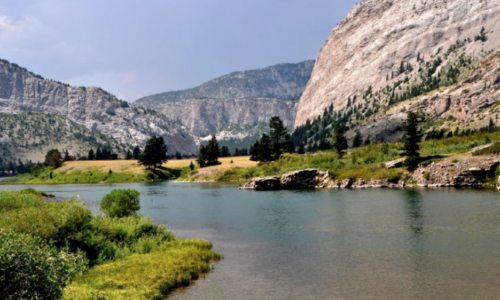





 Bucket 2 Environmental Drought Mitigation or “B2E” provides funding to public entities and tribes for projects that provide general environmental benefits or ecosystem / habitat benefits that address issues directly caused by drought.
Bucket 2 Environmental Drought Mitigation or “B2E” provides funding to public entities and tribes for projects that provide general environmental benefits or ecosystem / habitat benefits that address issues directly caused by drought.




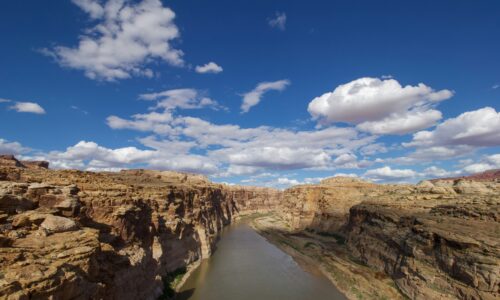


 Housing and Urban Development’s Section 108 Loan Guarantee Program (Section 108) provides communities with a source of low-cost, long-term financing for economic and community development projects. Section 108 financing provides an avenue for communities to undertake larger, more costly projects, where they may have limited resources to invest in upfront.
Housing and Urban Development’s Section 108 Loan Guarantee Program (Section 108) provides communities with a source of low-cost, long-term financing for economic and community development projects. Section 108 financing provides an avenue for communities to undertake larger, more costly projects, where they may have limited resources to invest in upfront.
 HUD Section 108 staff provides
HUD Section 108 staff provides  decentralized strategies on public property not directly owned or controlled by the water utility, i.e., “
decentralized strategies on public property not directly owned or controlled by the water utility, i.e., “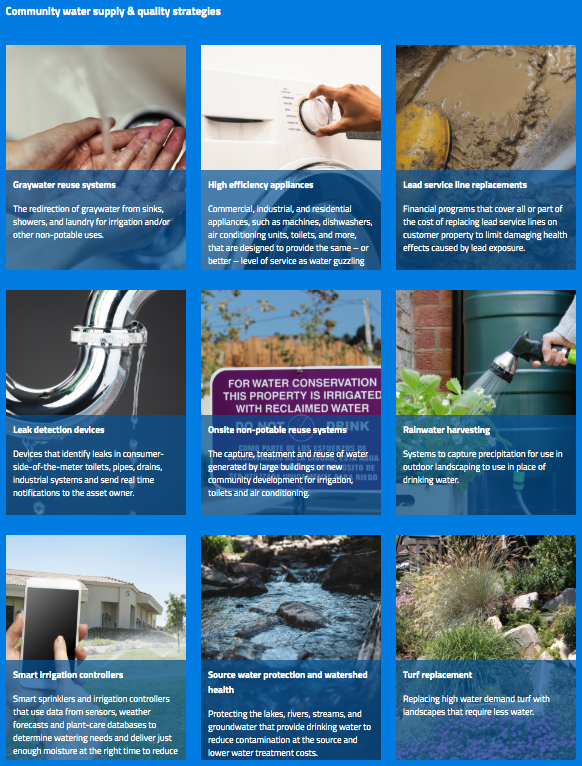
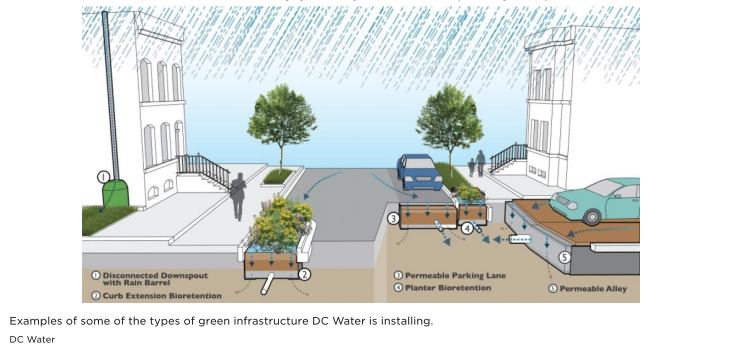 owned and other government buildings to meet stormwater management needs.
owned and other government buildings to meet stormwater management needs.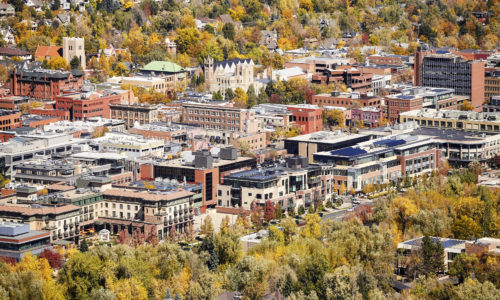

 For example,
For example, 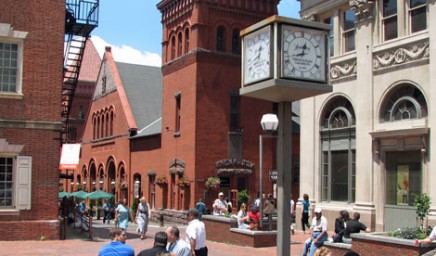
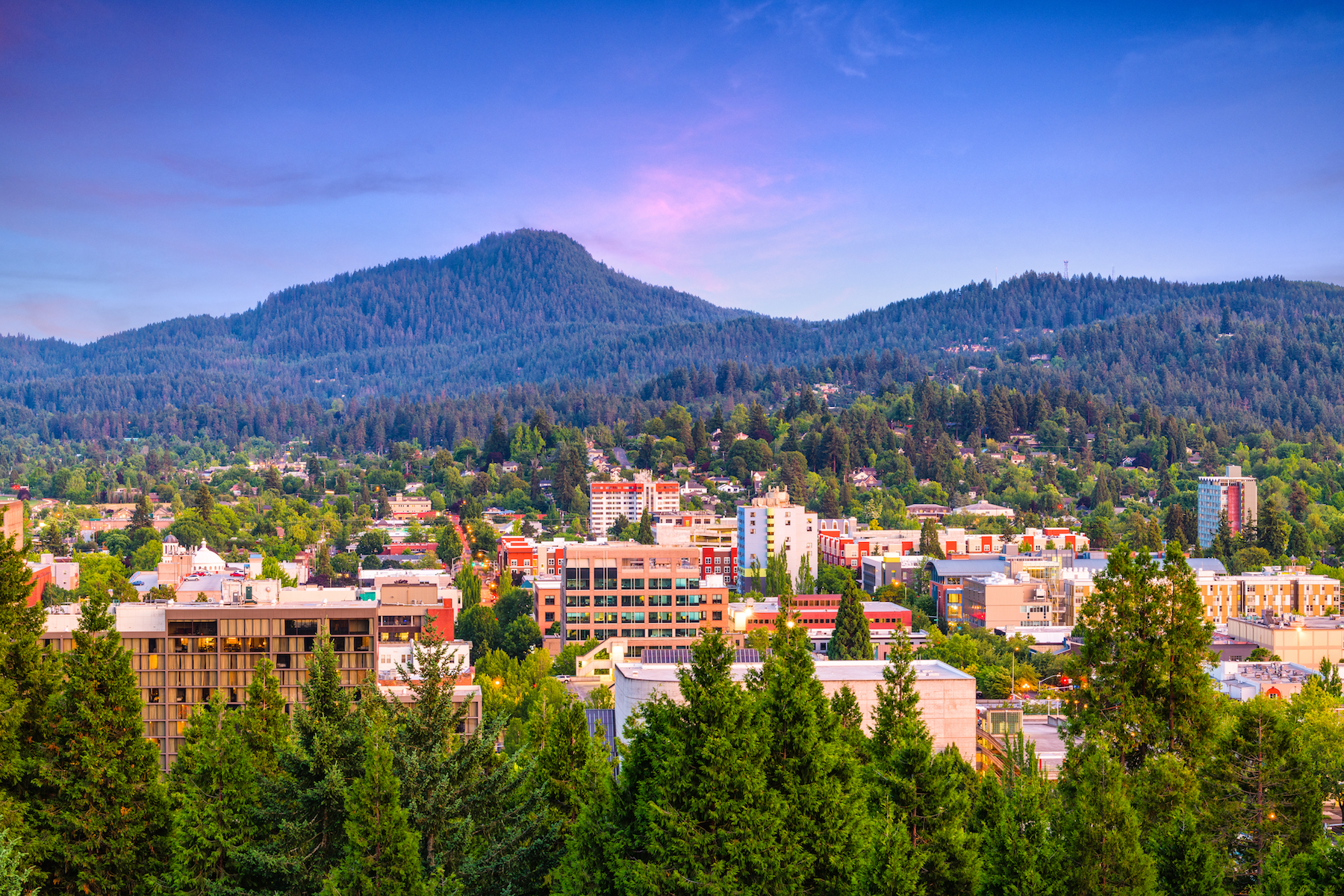

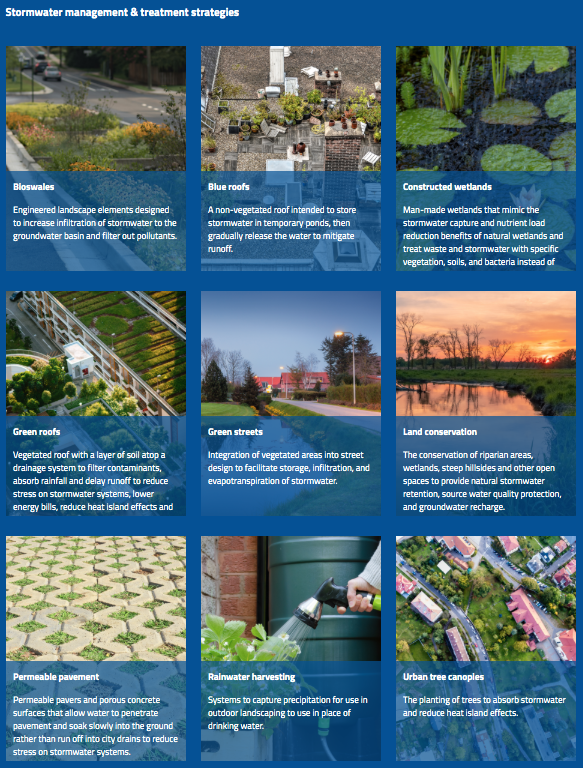
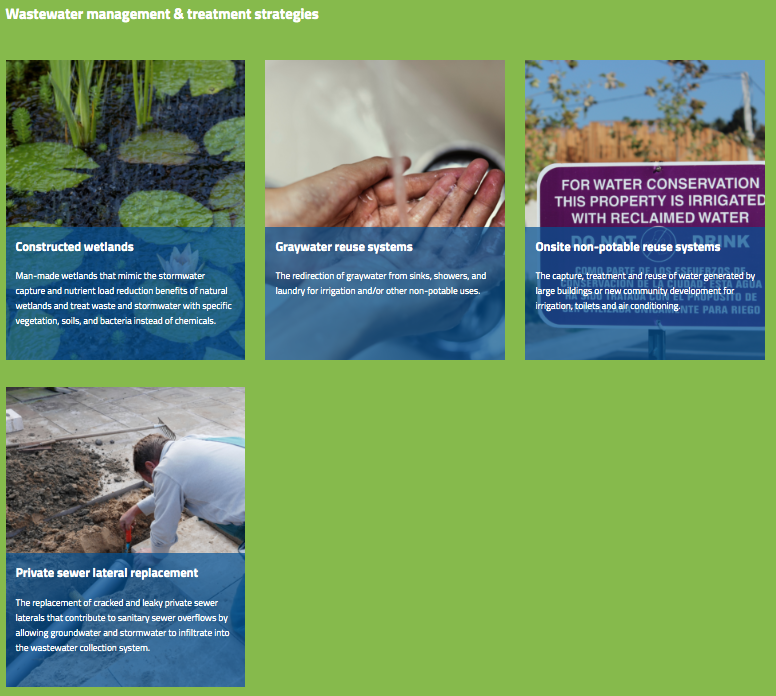
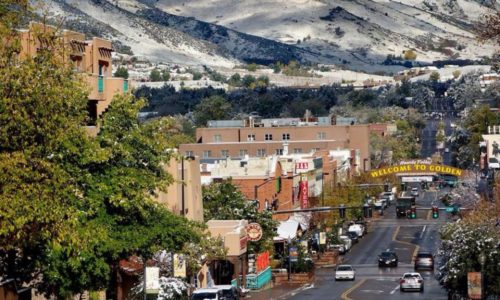
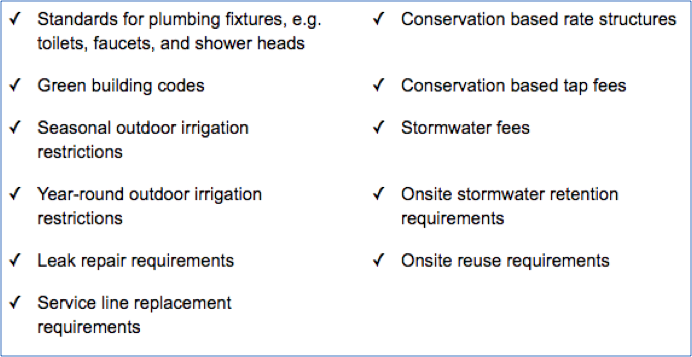
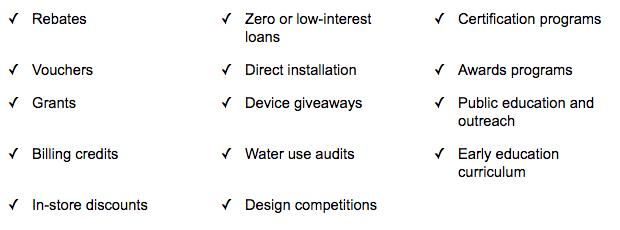
 Motivating existing property owners or developers to voluntarily install water-saving or stormwater-managing infrastructure and scaling investments in these cost-effective programs can, however, be challenging.
Motivating existing property owners or developers to voluntarily install water-saving or stormwater-managing infrastructure and scaling investments in these cost-effective programs can, however, be challenging. 

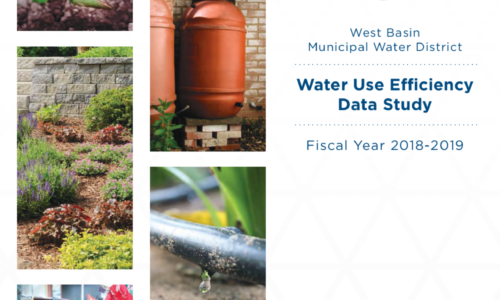
 dozens of households while others serve millions of people. For purposes of this module, we are focused on systems serving populations of at least 5,000, as smaller systems often face their own unique challenges and needs. The module also focuses on drinking water utilities, but may, nonetheless be relevant for wastewater systems as well, given potentially overlapping concerns.
dozens of households while others serve millions of people. For purposes of this module, we are focused on systems serving populations of at least 5,000, as smaller systems often face their own unique challenges and needs. The module also focuses on drinking water utilities, but may, nonetheless be relevant for wastewater systems as well, given potentially overlapping concerns.
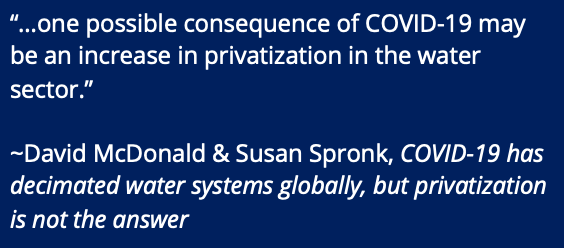 A community’s health, safety, and economy are dependent on the ability to access clean, safe, and affordable water, making water a critical public good. Providing uninterrupted access to clean water also is fundamental to
A community’s health, safety, and economy are dependent on the ability to access clean, safe, and affordable water, making water a critical public good. Providing uninterrupted access to clean water also is fundamental to 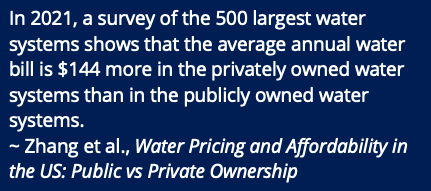 research supported by Cornell University found that “among the largest water systems, private ownership is related to higher water prices and less affordability for low-income families.”
research supported by Cornell University found that “among the largest water systems, private ownership is related to higher water prices and less affordability for low-income families.”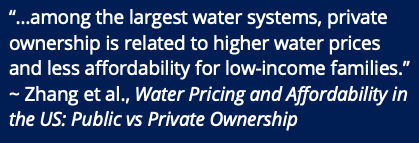 concern—keeping rates low due to the direct accountability they have to the general public, which has shown time and again that they will vote leaders out of office over rates.
concern—keeping rates low due to the direct accountability they have to the general public, which has shown time and again that they will vote leaders out of office over rates.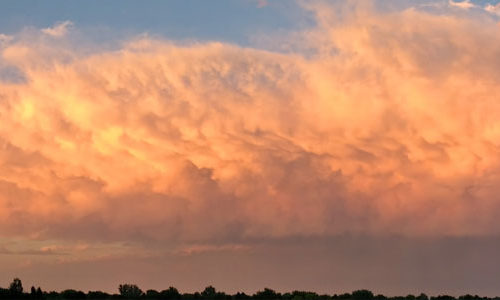
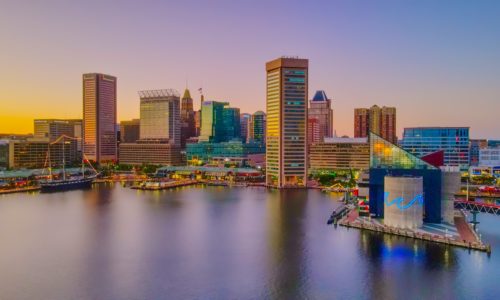

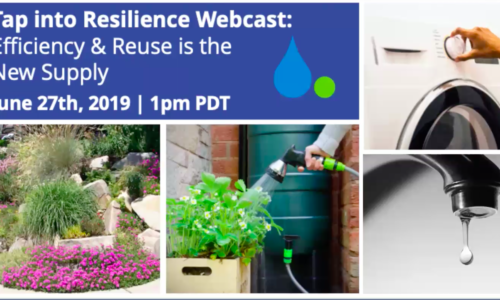
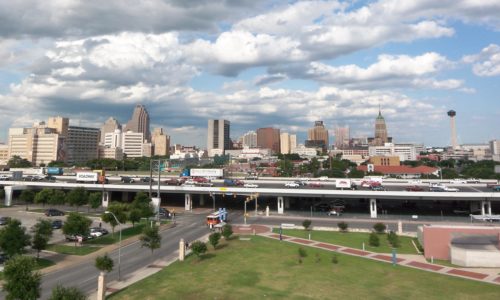

 particular, U.S. Bureau of Labor Statistics data show that workers earn 7.4% less at private utilities. For example, as of May 2007 (the most recent year for which data was found), local government employees’ median annual earnings were $37,740 and nongovernment water, sewage, and other systems employees earned $34,950. And as compared with local government benefits, an additional one in three workers lacks access to retirement benefits.
particular, U.S. Bureau of Labor Statistics data show that workers earn 7.4% less at private utilities. For example, as of May 2007 (the most recent year for which data was found), local government employees’ median annual earnings were $37,740 and nongovernment water, sewage, and other systems employees earned $34,950. And as compared with local government benefits, an additional one in three workers lacks access to retirement benefits. created than the same investment in deep tunnel systems or new water treatment plants. As is shown in the chart below, a $10 million investment in urban forests has the potential to create nearly 230 jobs; the same investment in a deep tunnel system has the potential to create about 150 jobs, nearly 100 fewer jobs as compared with the conventional approach. These estimates are based on research conducted by Economic Policy Institute, as well as data collected from the Bureau of Labor Statistics. Expenditure profiles for each investment category are based on existing examples and expert opinion, and may vary considerably depending on project specifics. The Water Infrastructure Jobs Calculator does provide a starting place for evaluating the workforce benefits of sustainable infrastructure investments.
created than the same investment in deep tunnel systems or new water treatment plants. As is shown in the chart below, a $10 million investment in urban forests has the potential to create nearly 230 jobs; the same investment in a deep tunnel system has the potential to create about 150 jobs, nearly 100 fewer jobs as compared with the conventional approach. These estimates are based on research conducted by Economic Policy Institute, as well as data collected from the Bureau of Labor Statistics. Expenditure profiles for each investment category are based on existing examples and expert opinion, and may vary considerably depending on project specifics. The Water Infrastructure Jobs Calculator does provide a starting place for evaluating the workforce benefits of sustainable infrastructure investments.
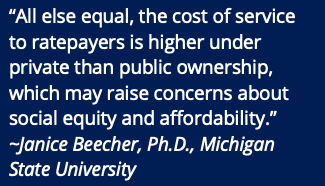

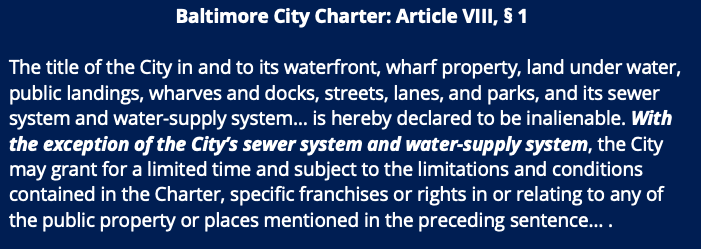
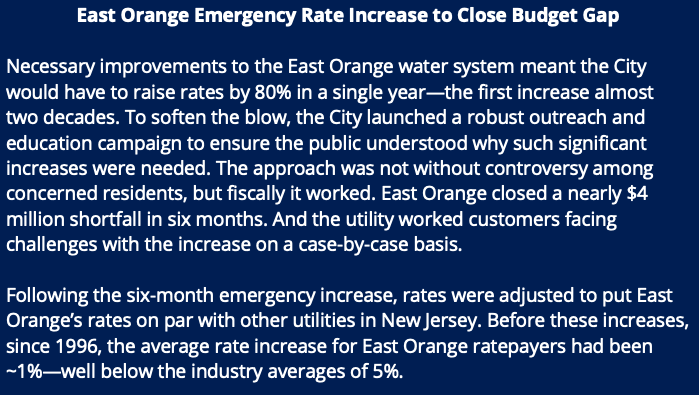
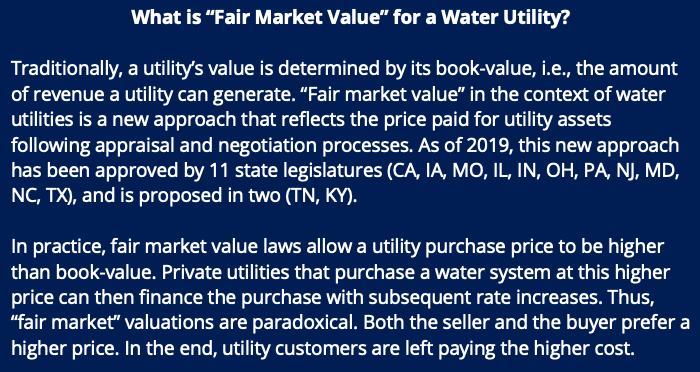
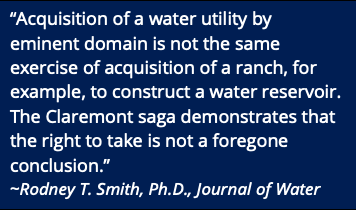
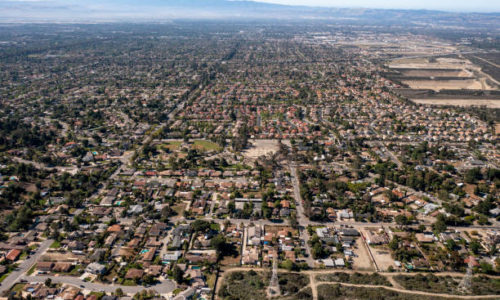
 in the late 19th century and into the 1930s. The tide turned once again in the 1980s with efforts to re-introduce privatization in various forms. More recently, there have been a number of remunicipalizations to bring privately-run services back into public control. Most of these buy-backs were driven by cost or water quality concerns, rather than philosophical objections to private ownership that drive remunicipalization in Europe and Latin America, according to a 2021 study.
in the late 19th century and into the 1930s. The tide turned once again in the 1980s with efforts to re-introduce privatization in various forms. More recently, there have been a number of remunicipalizations to bring privately-run services back into public control. Most of these buy-backs were driven by cost or water quality concerns, rather than philosophical objections to private ownership that drive remunicipalization in Europe and Latin America, according to a 2021 study.